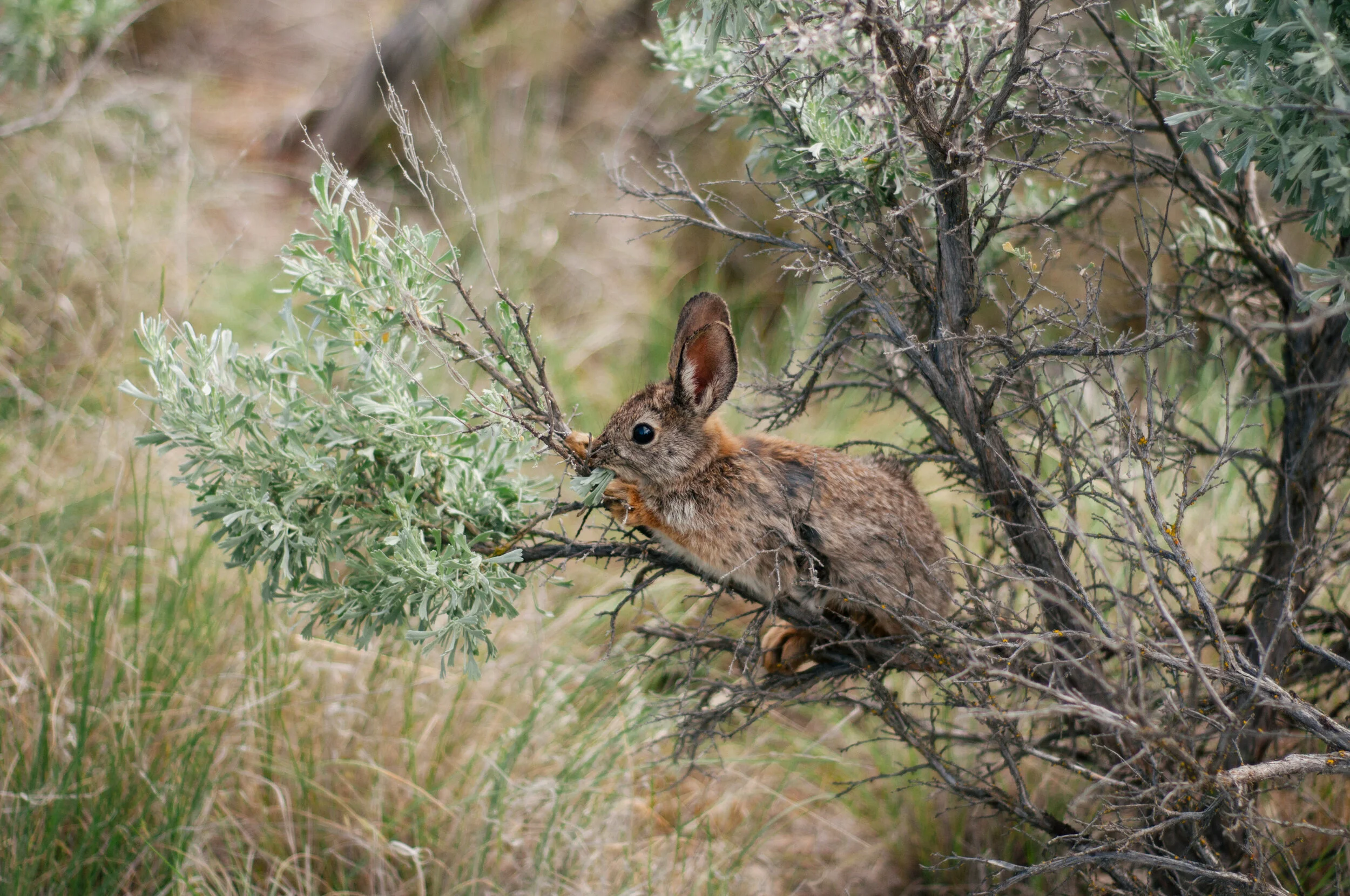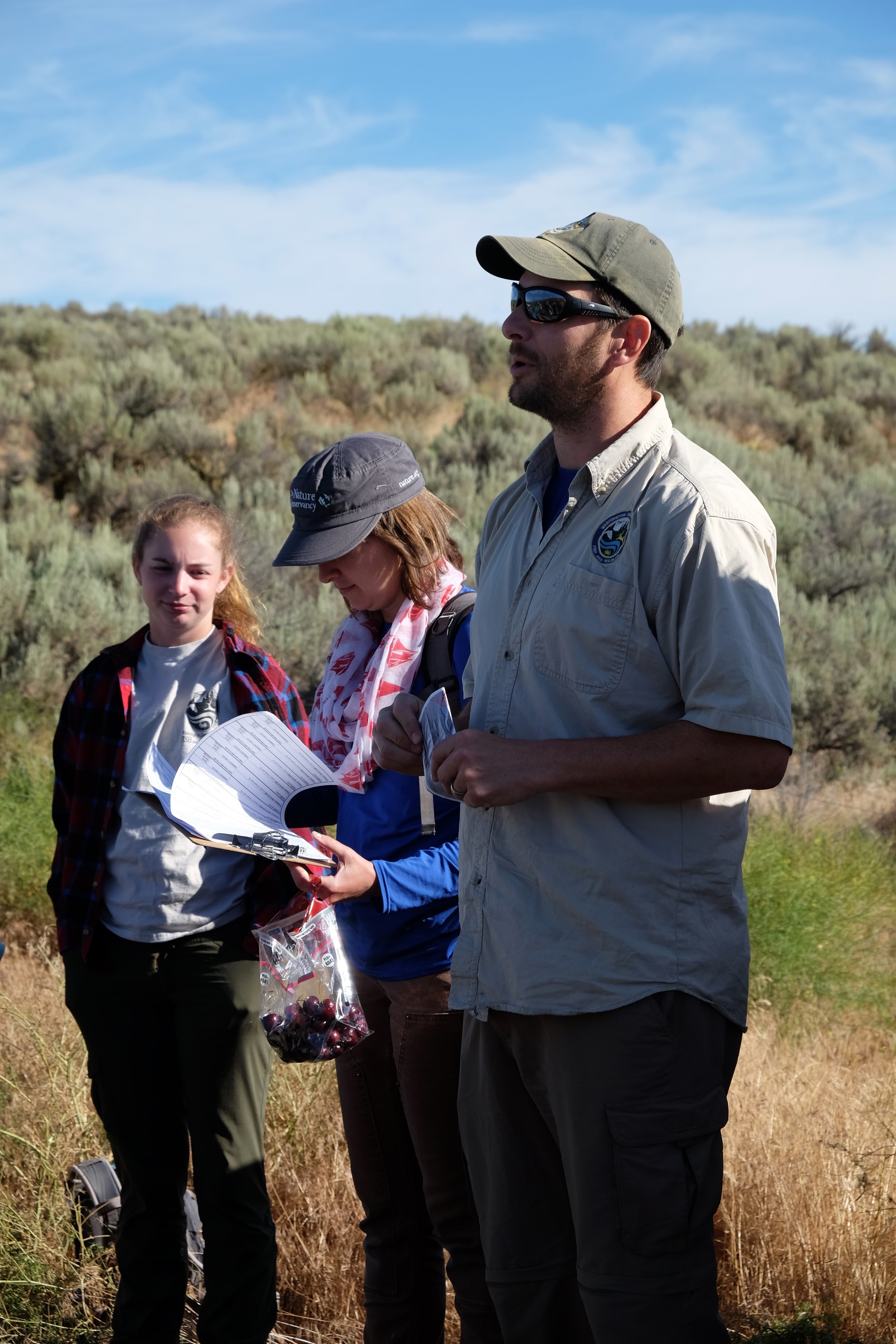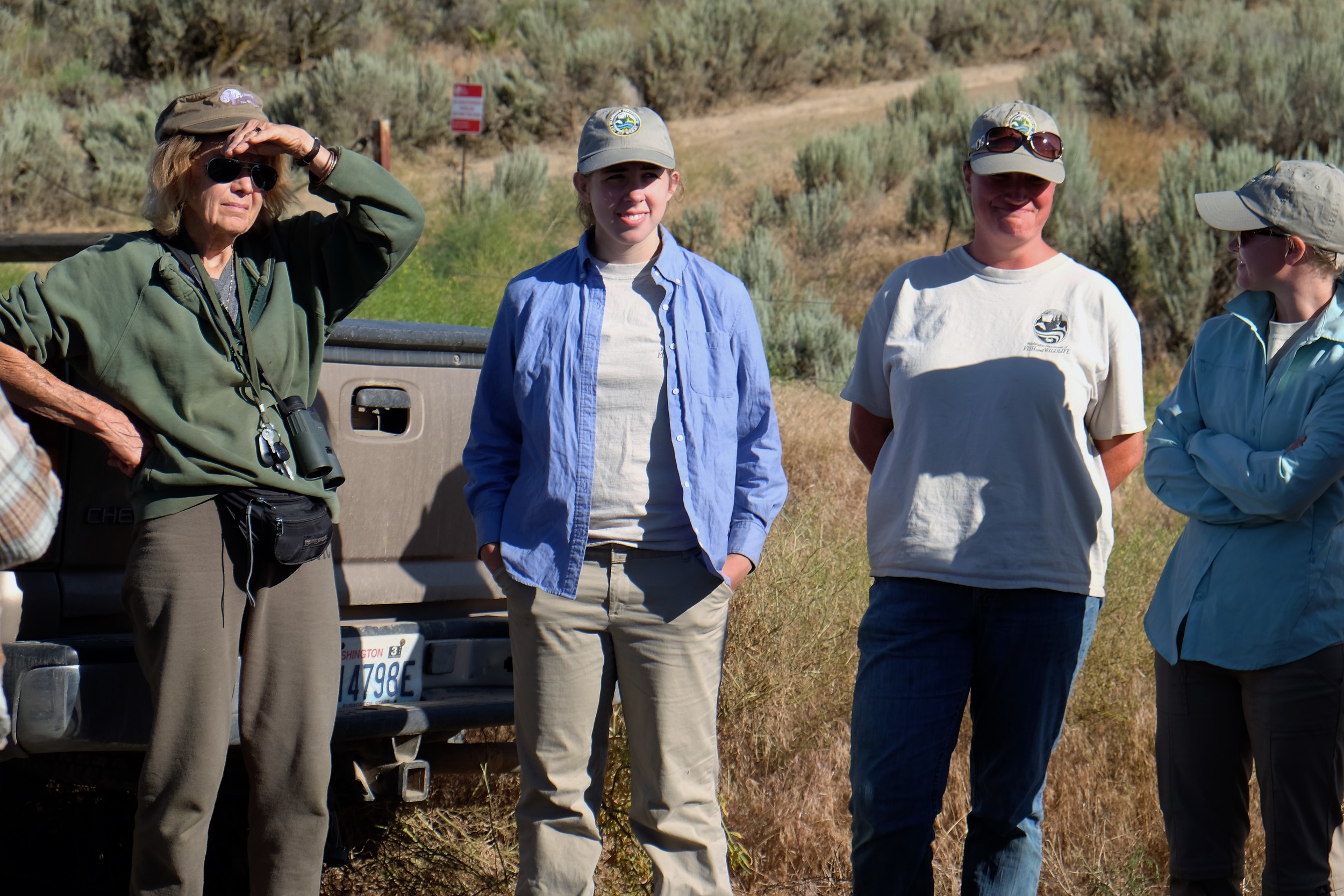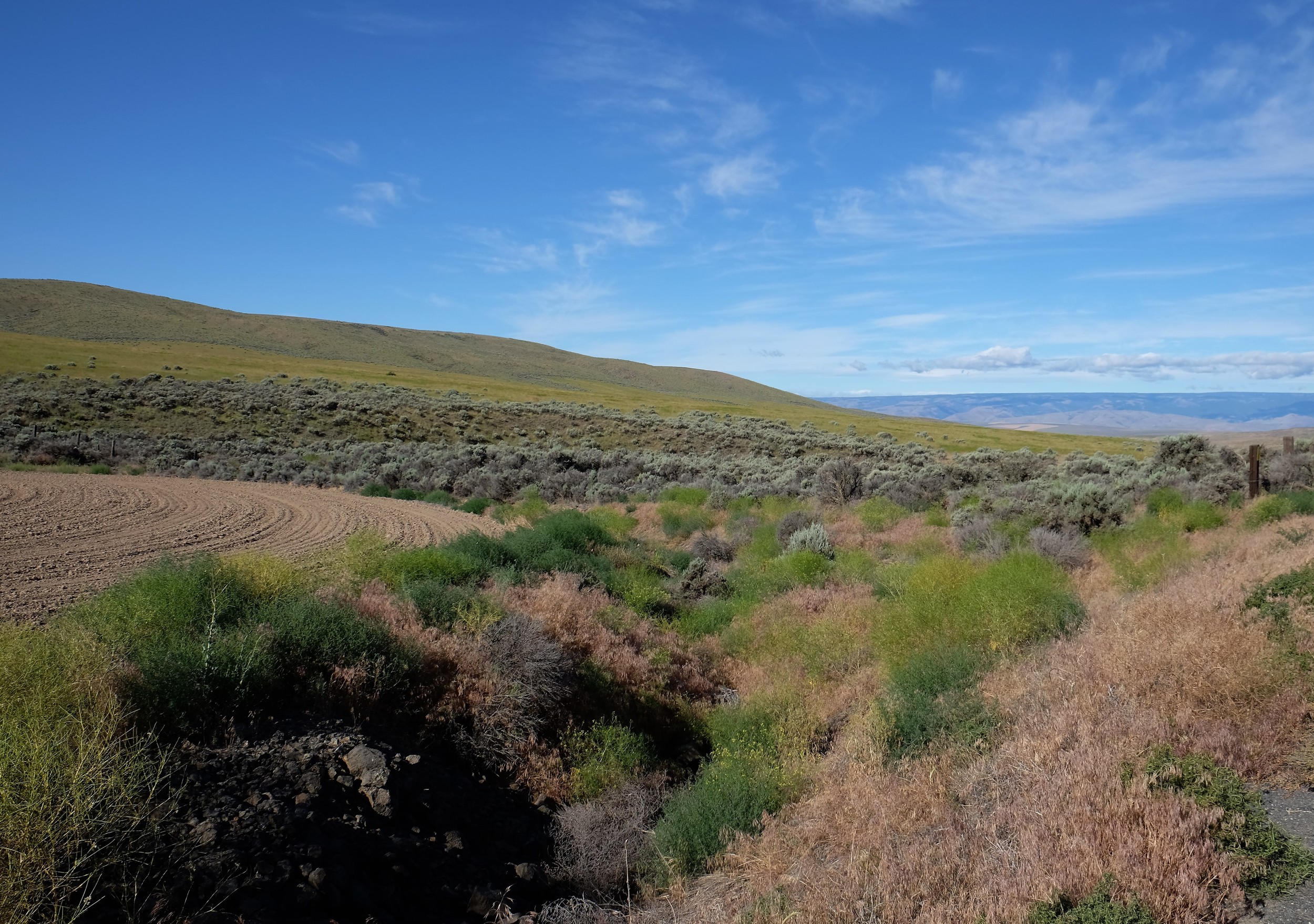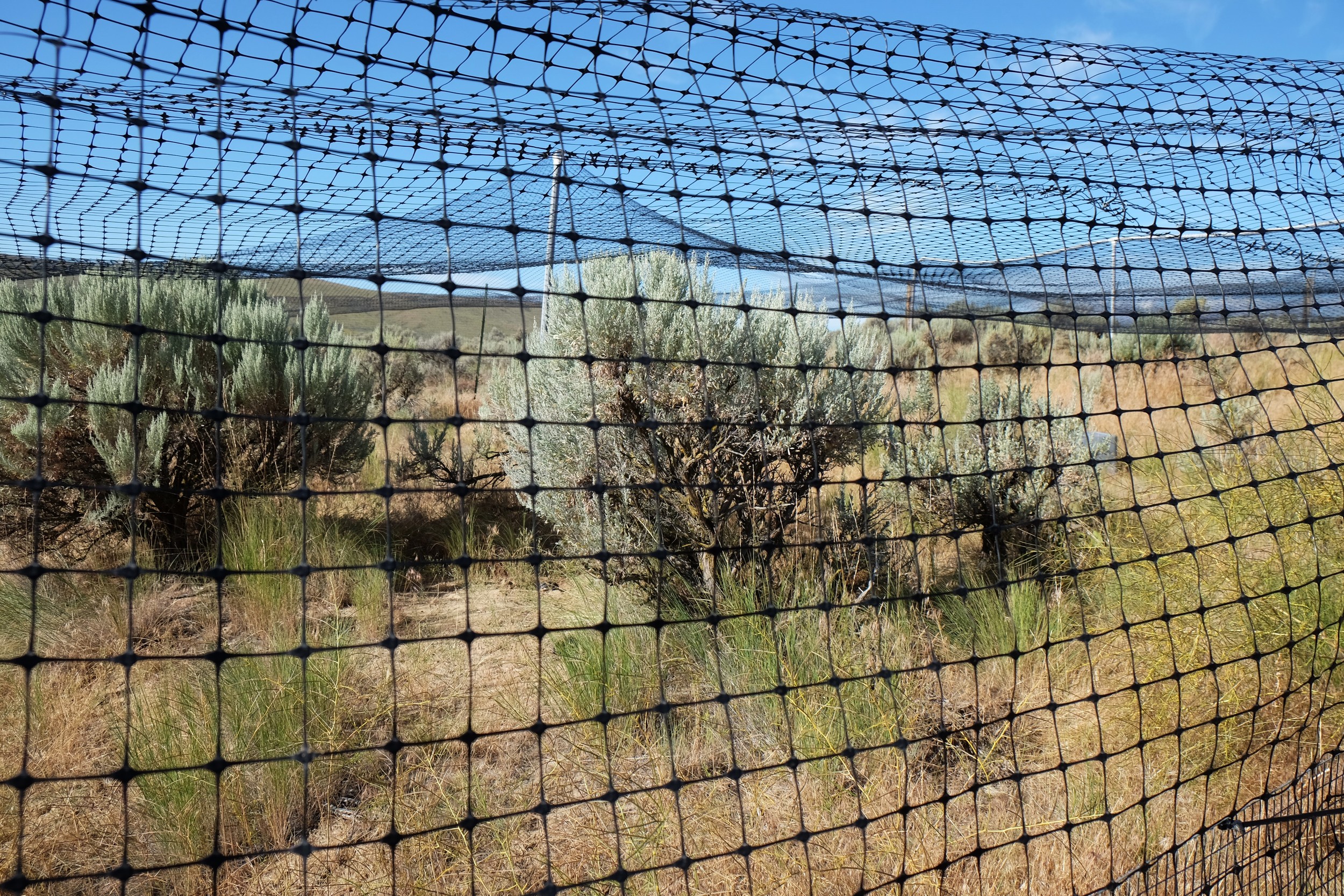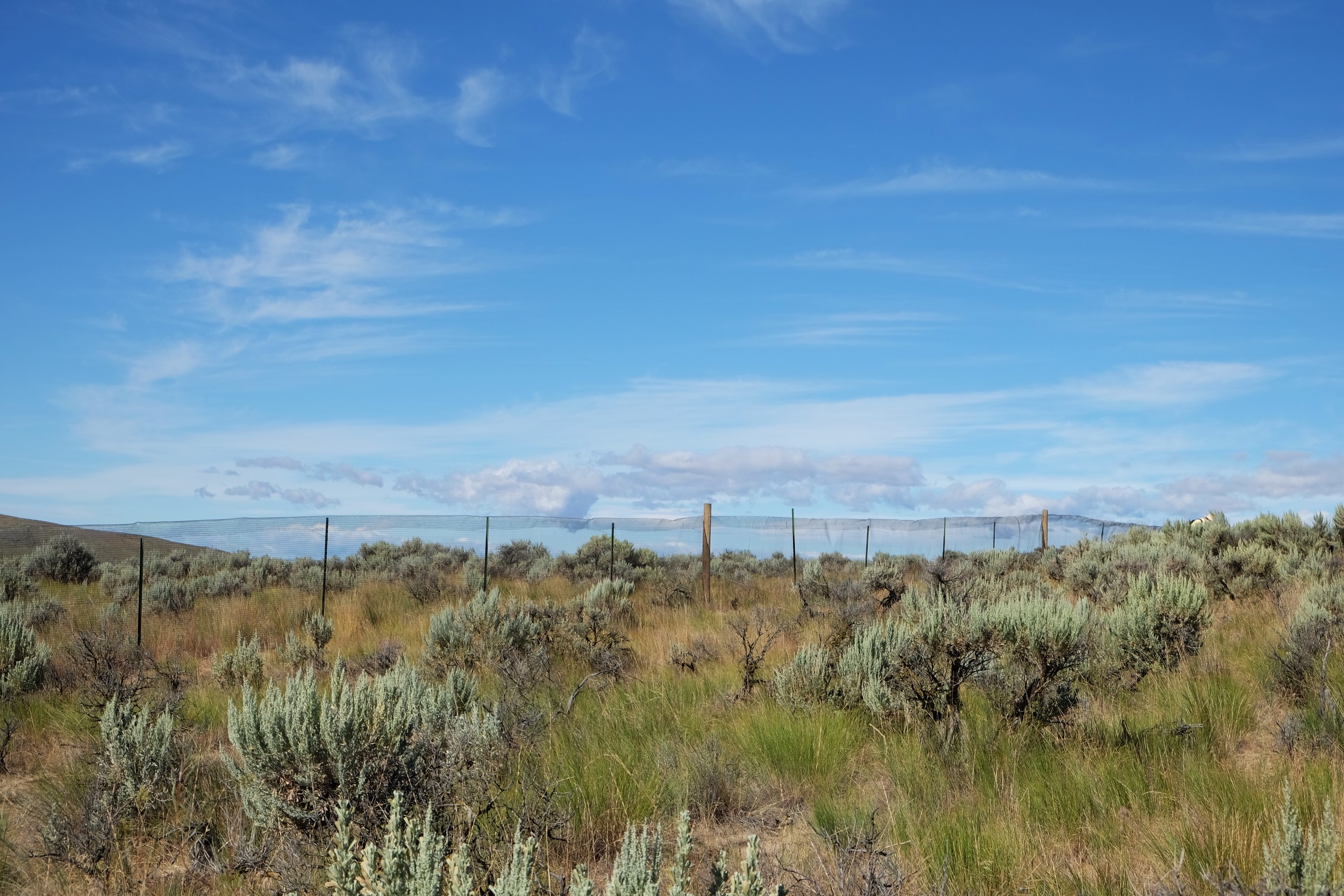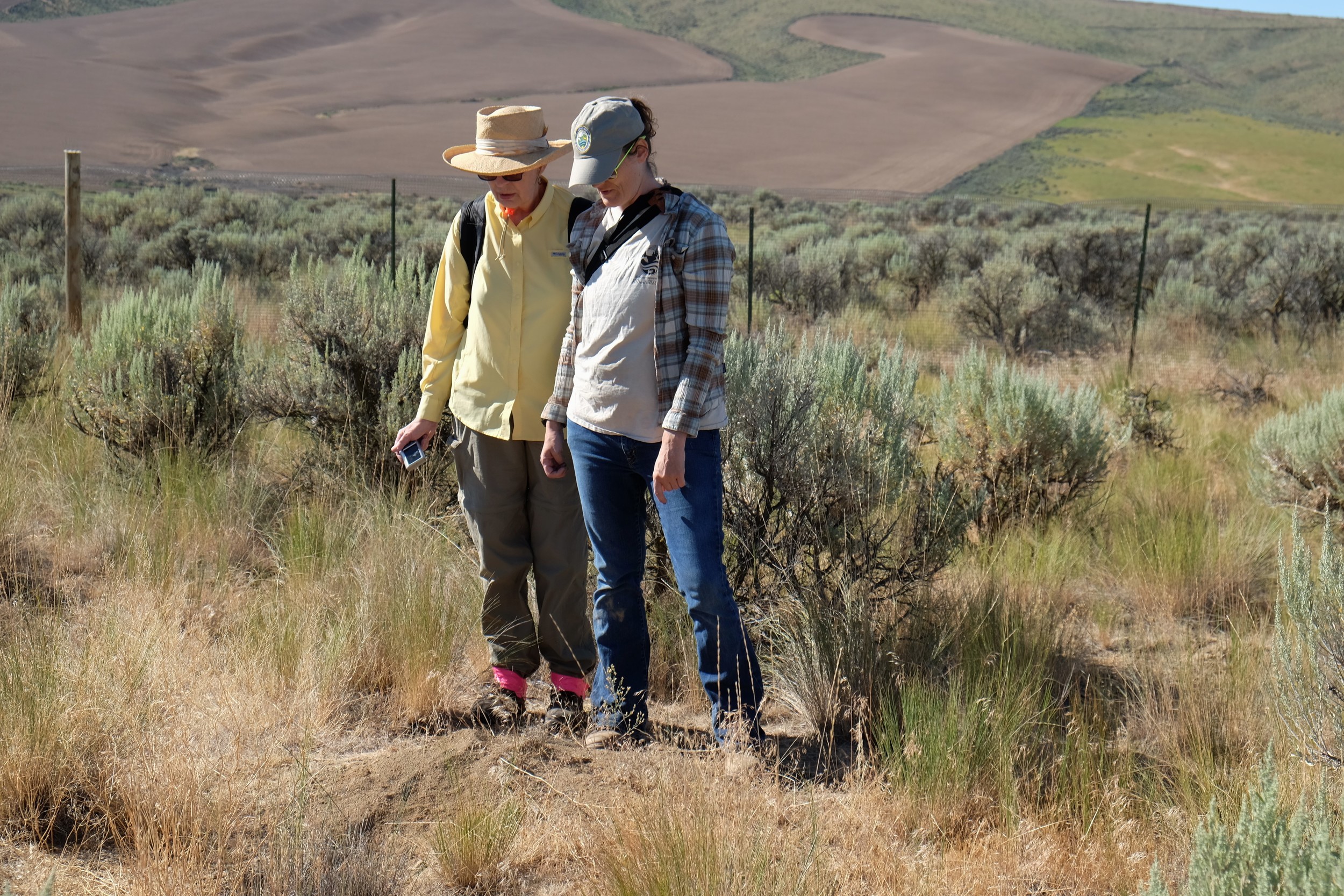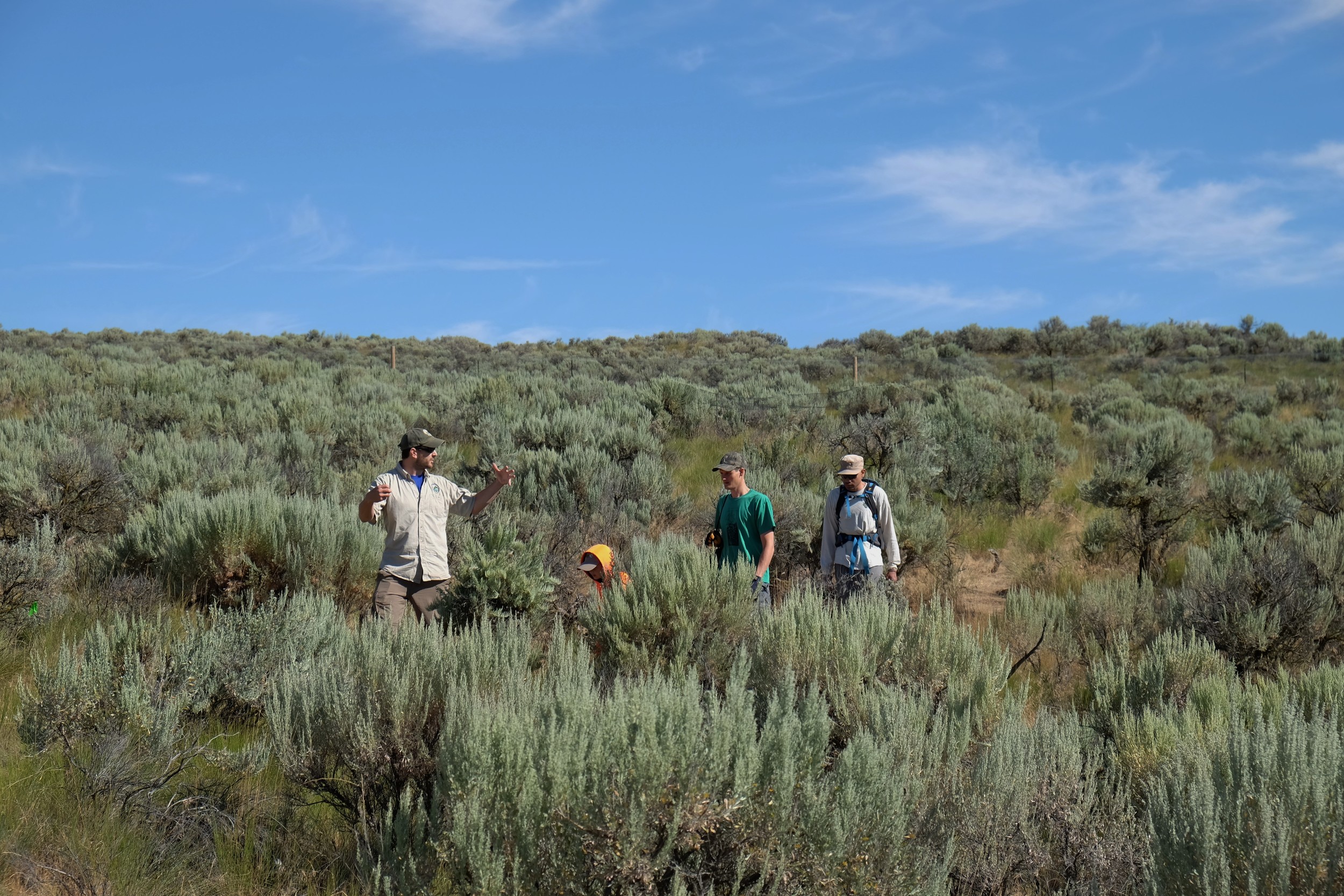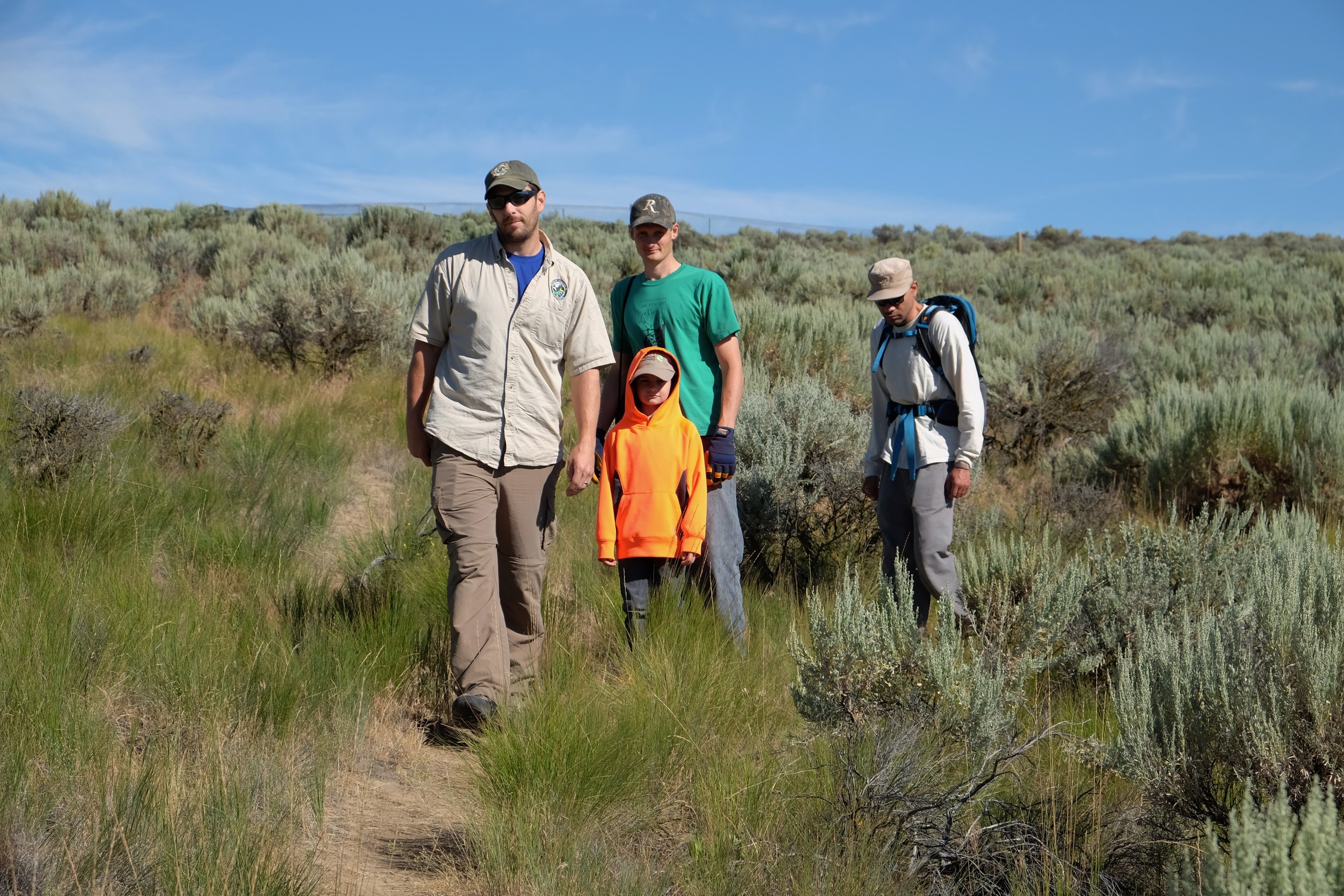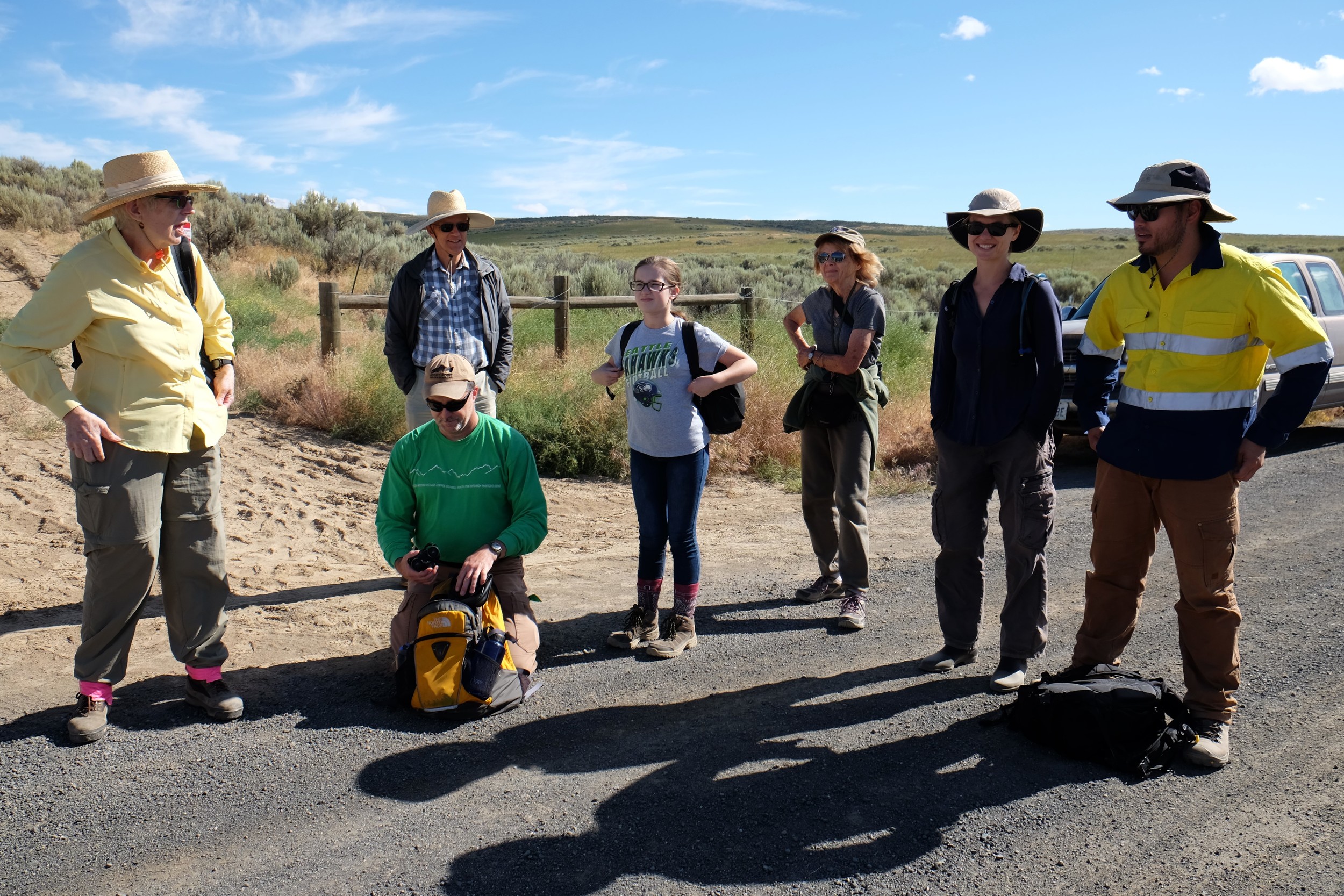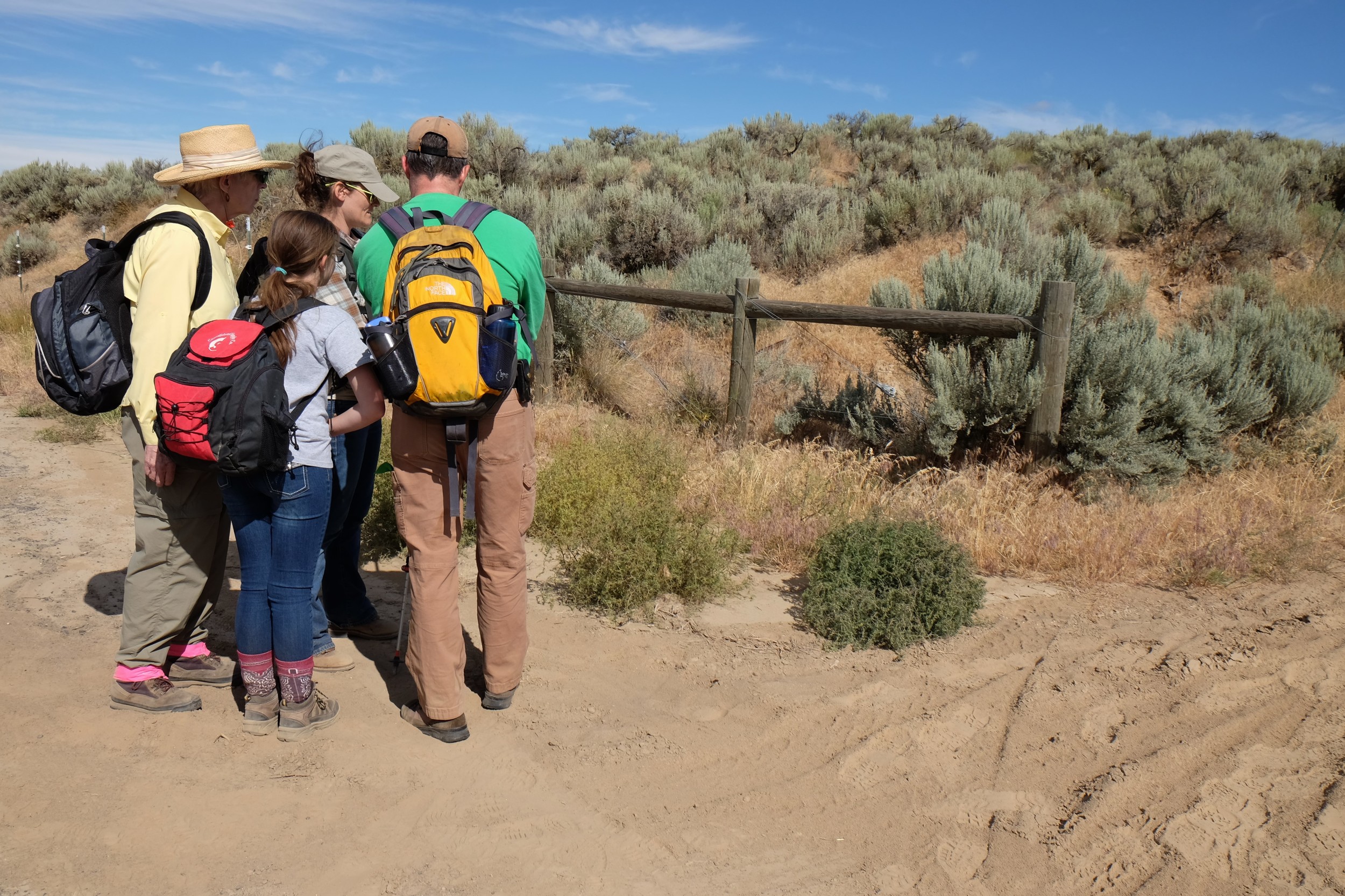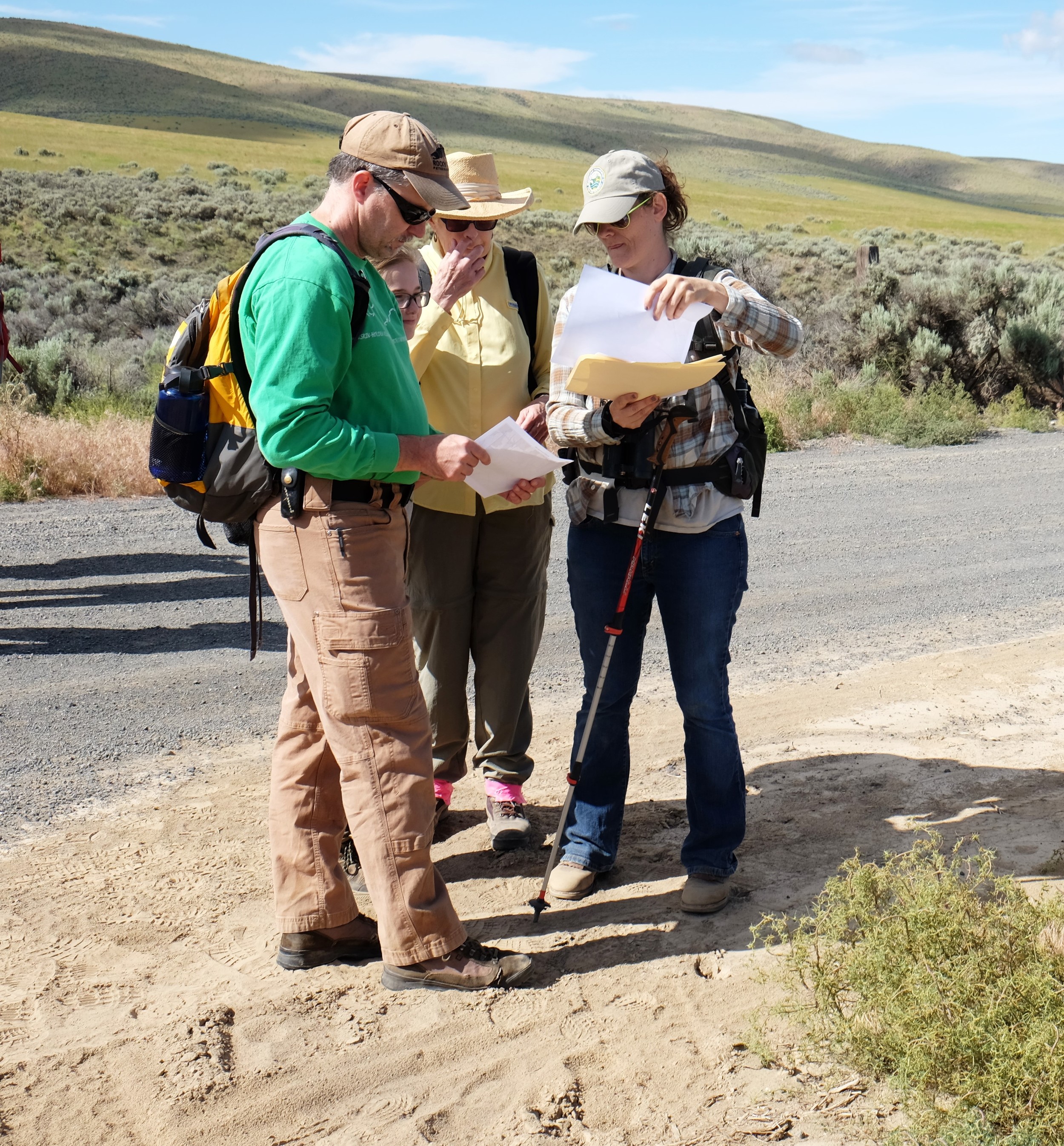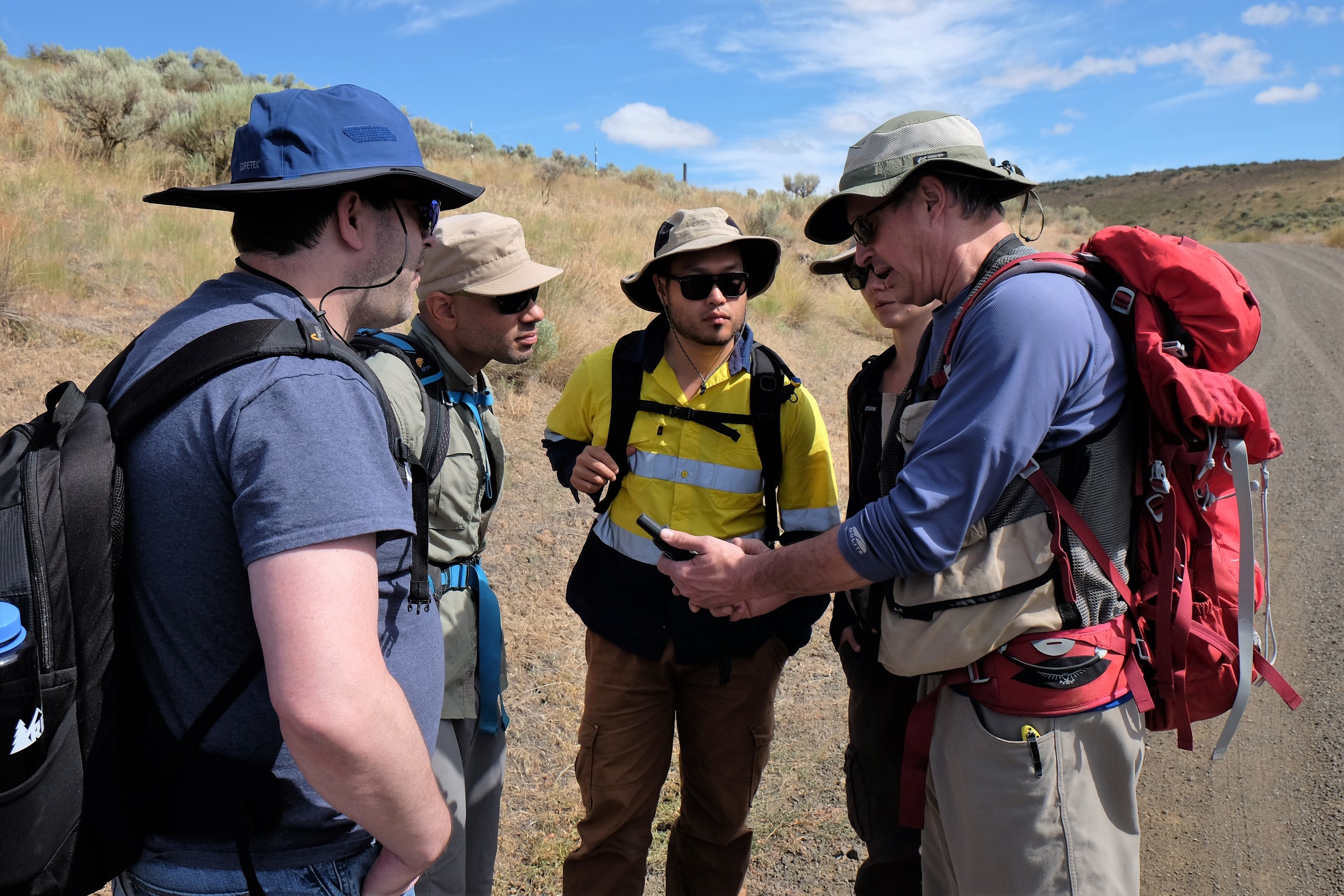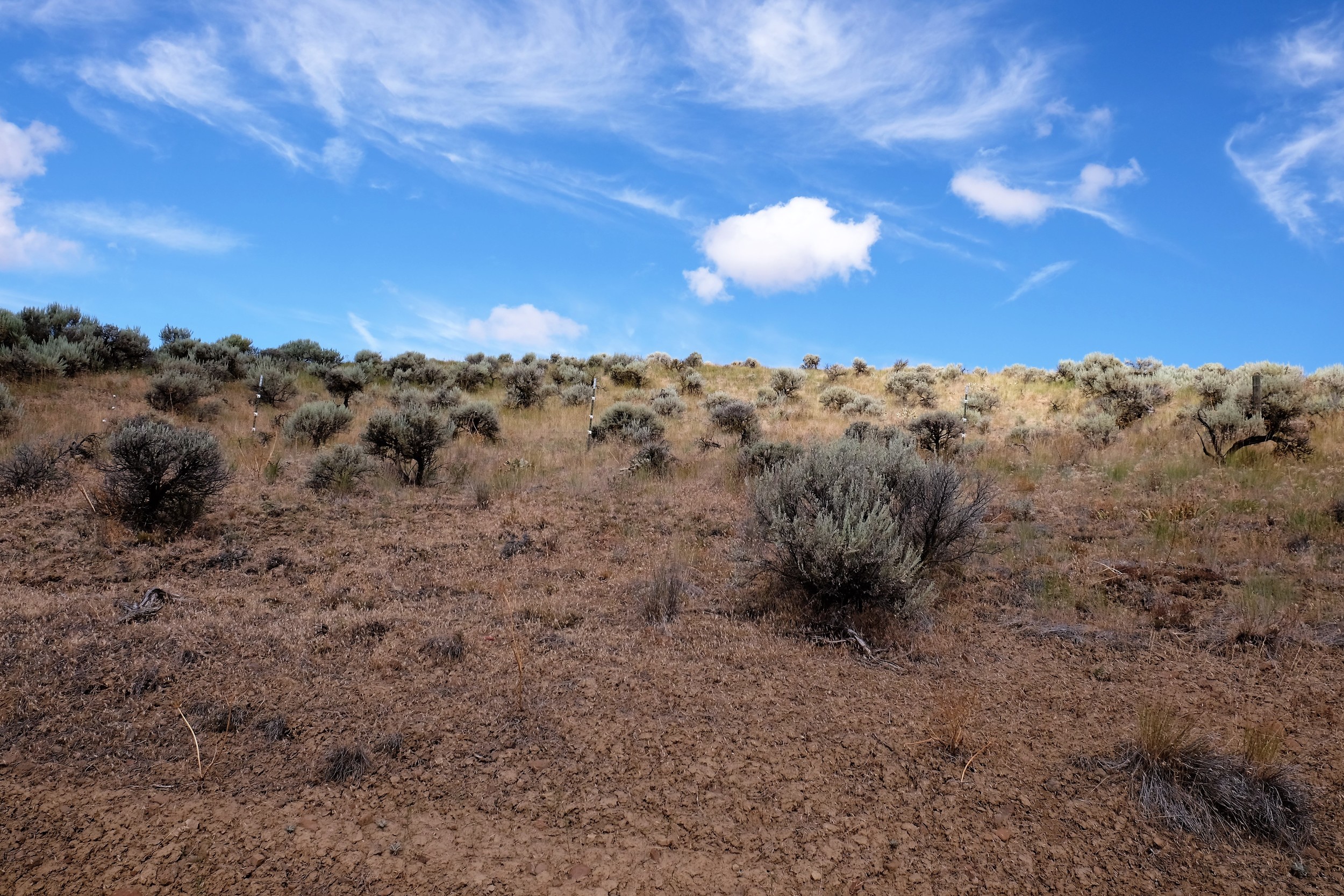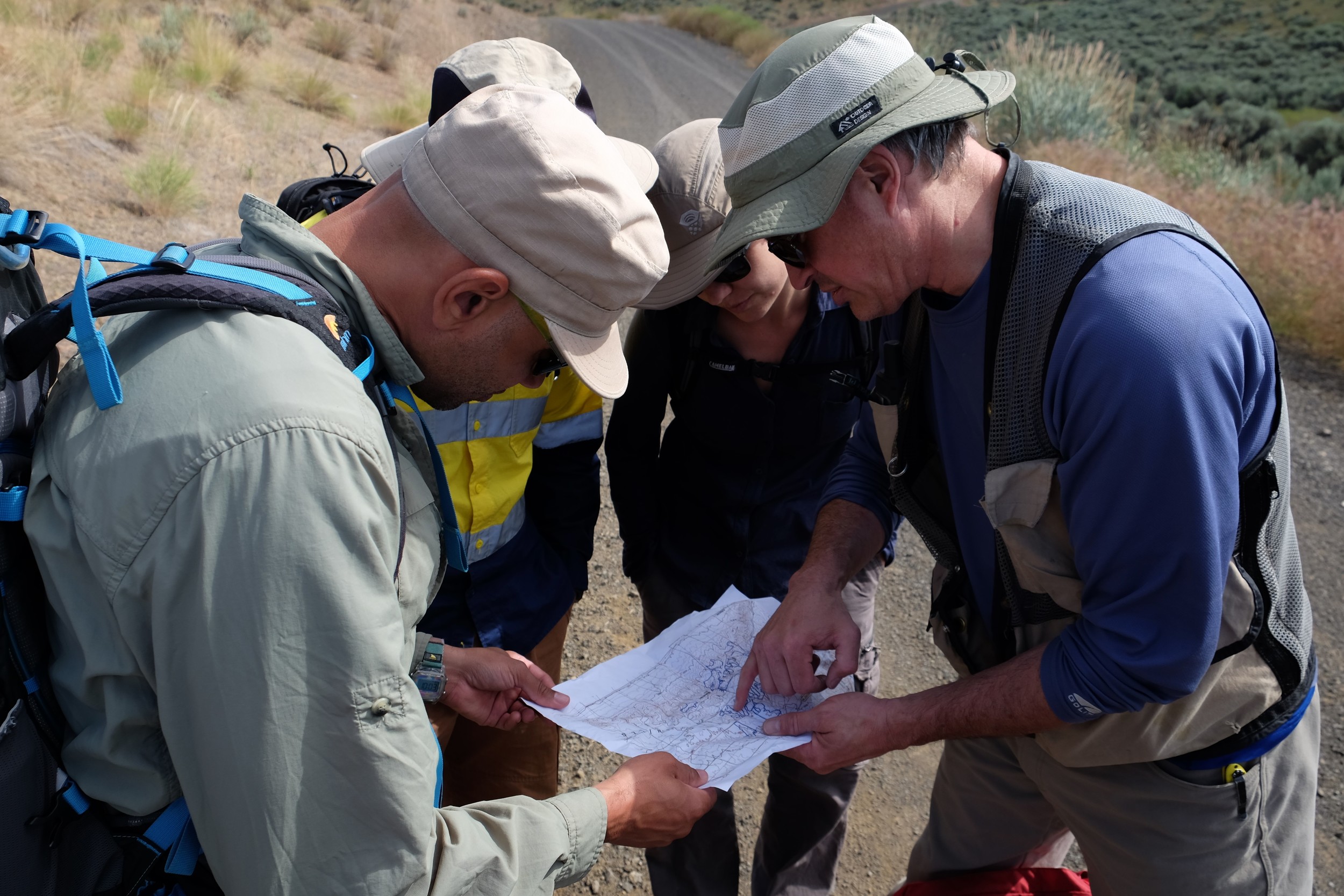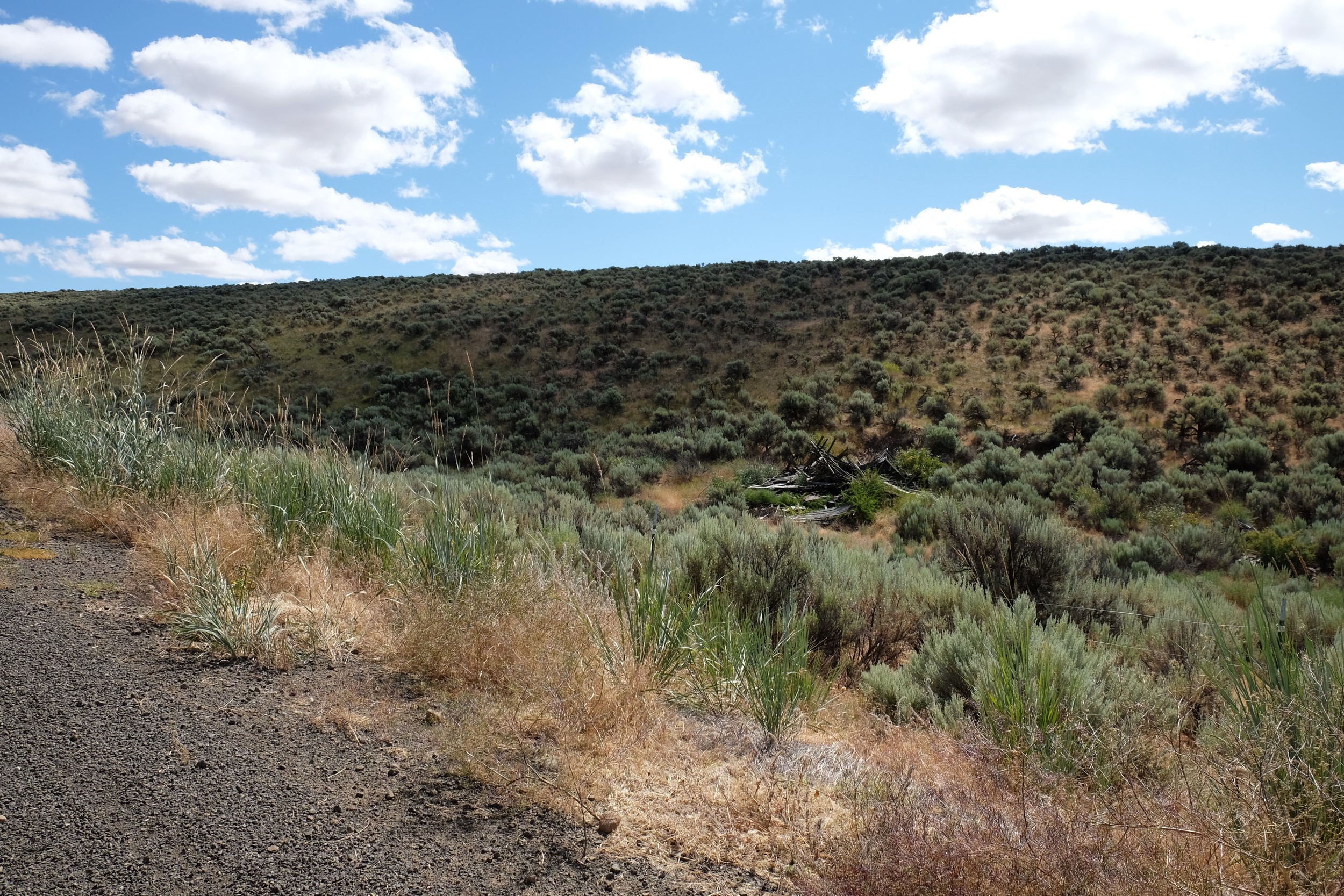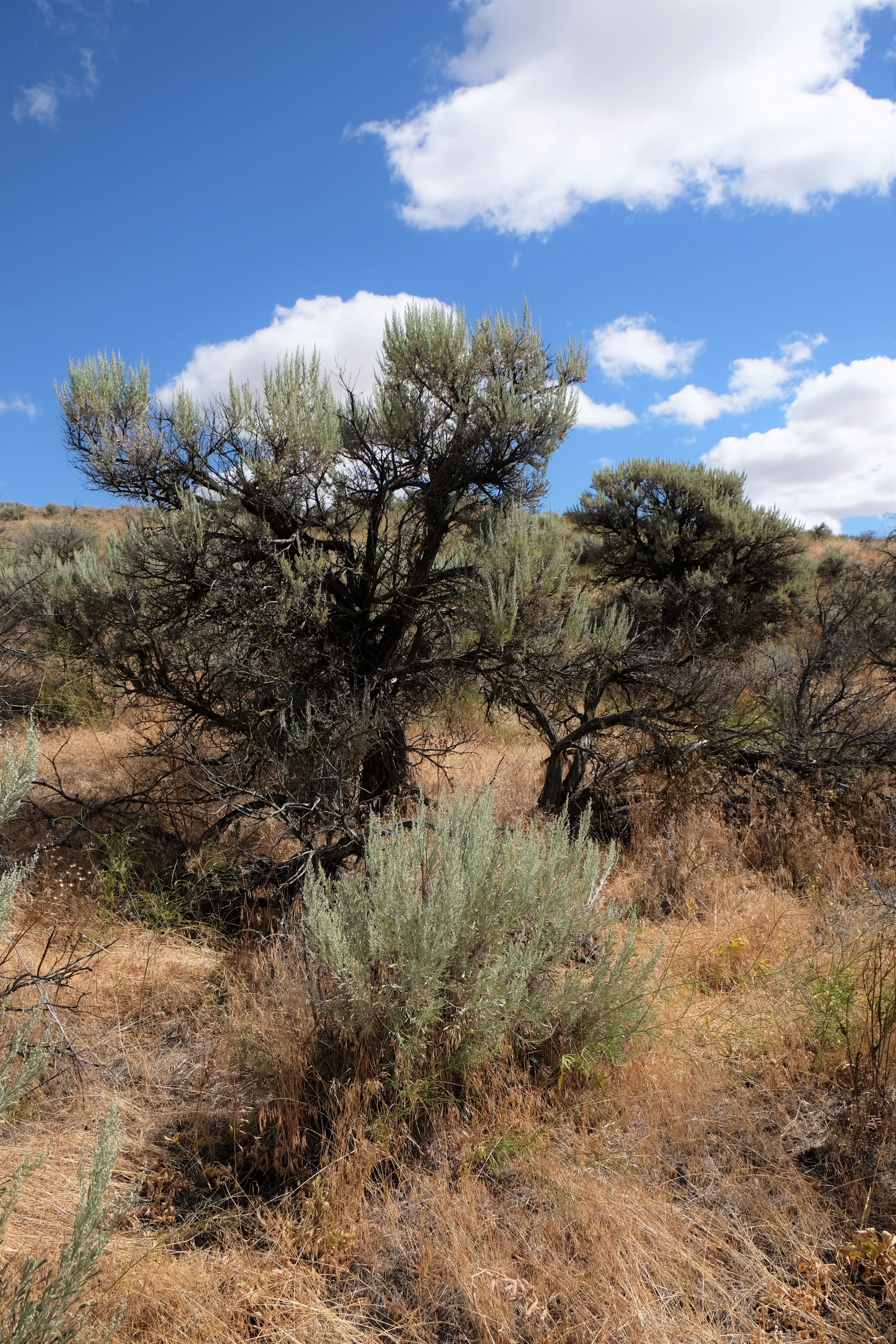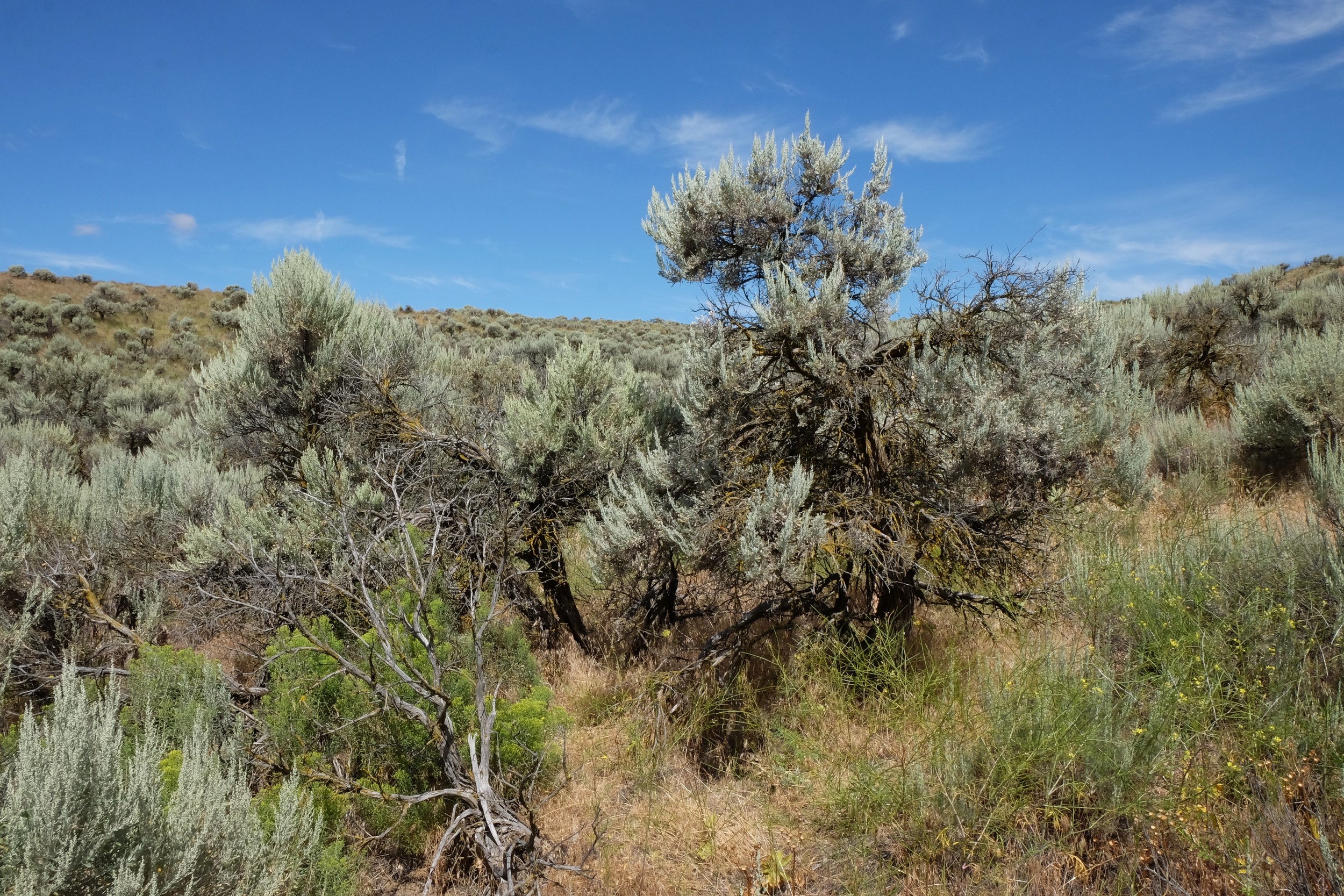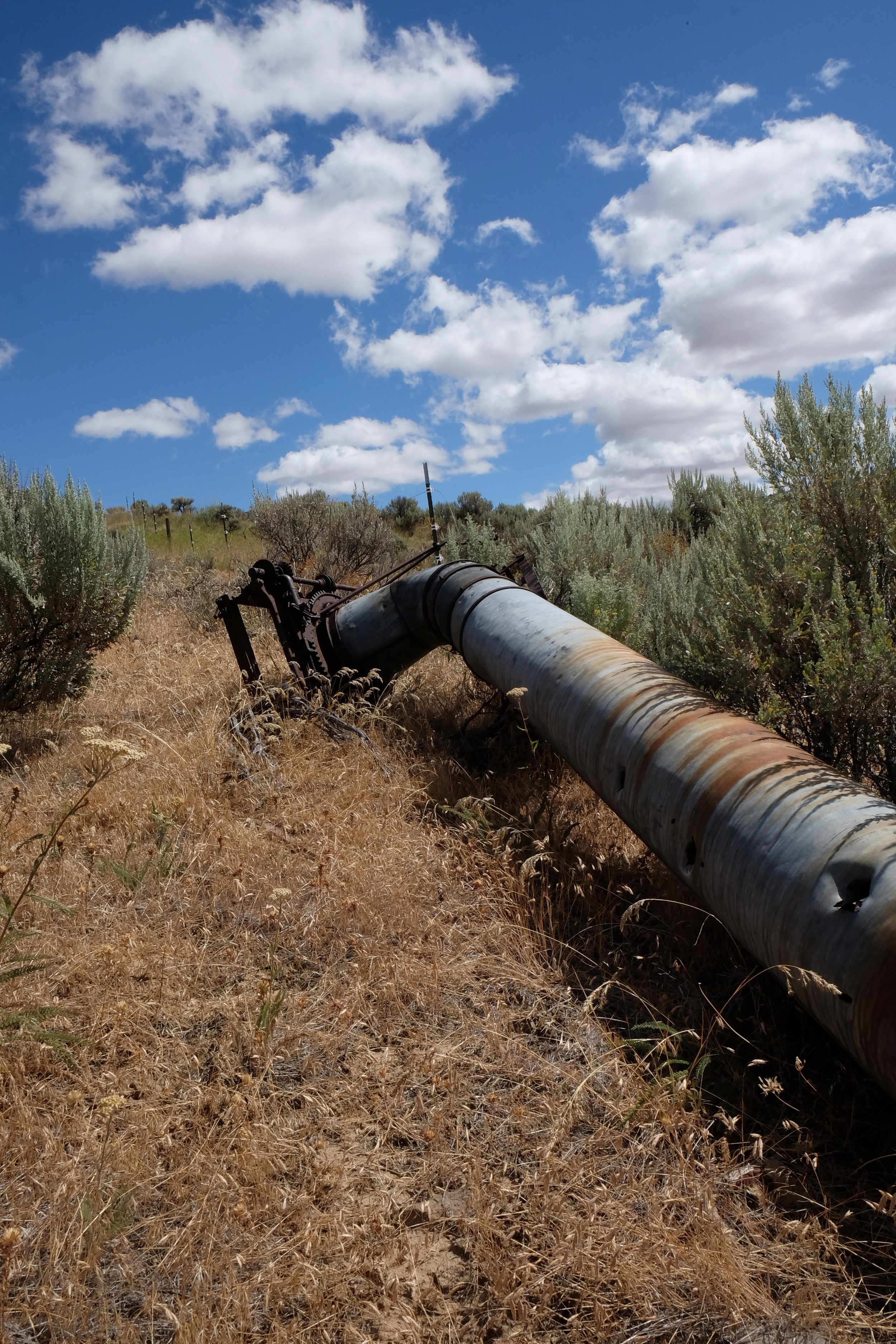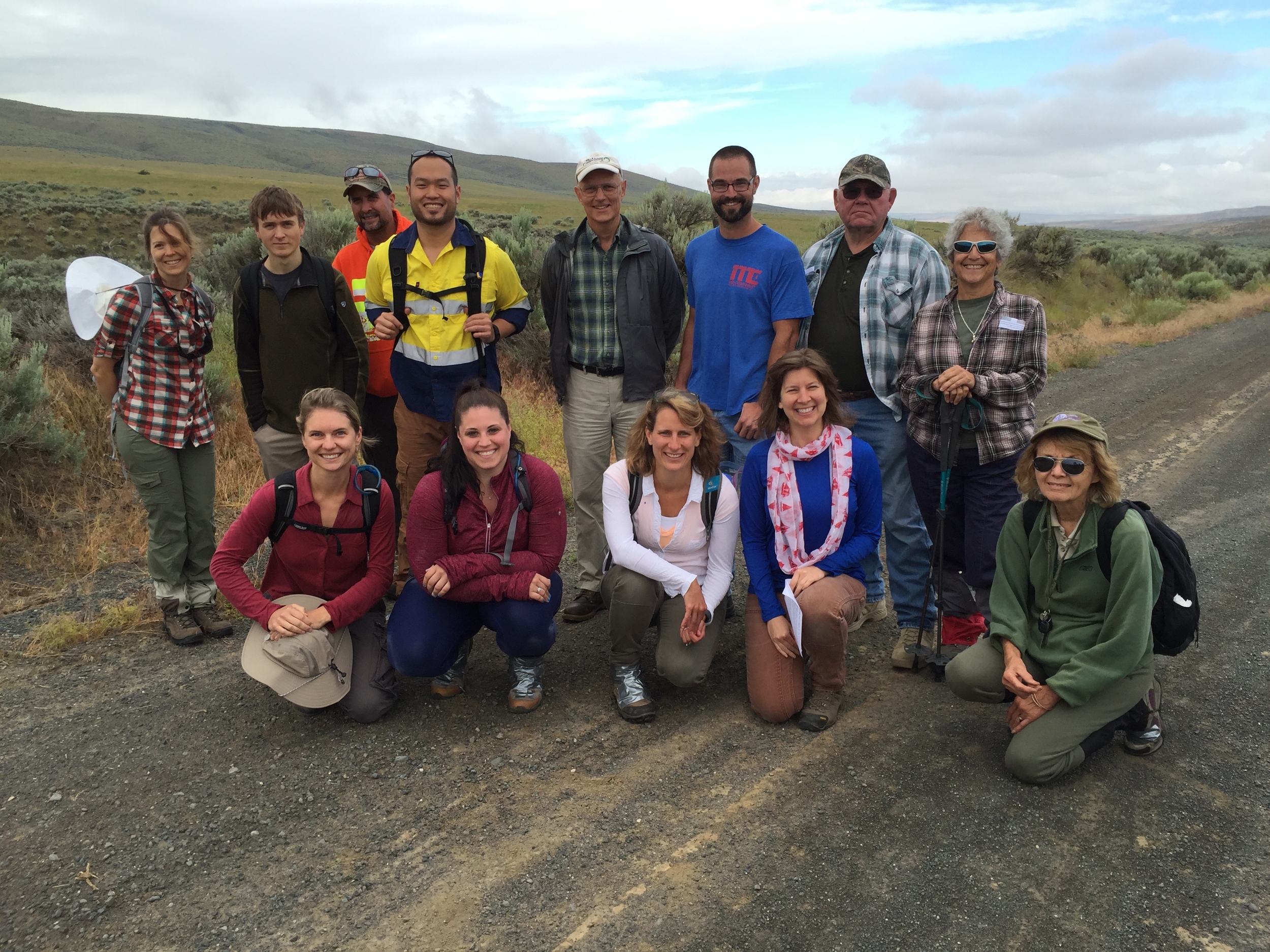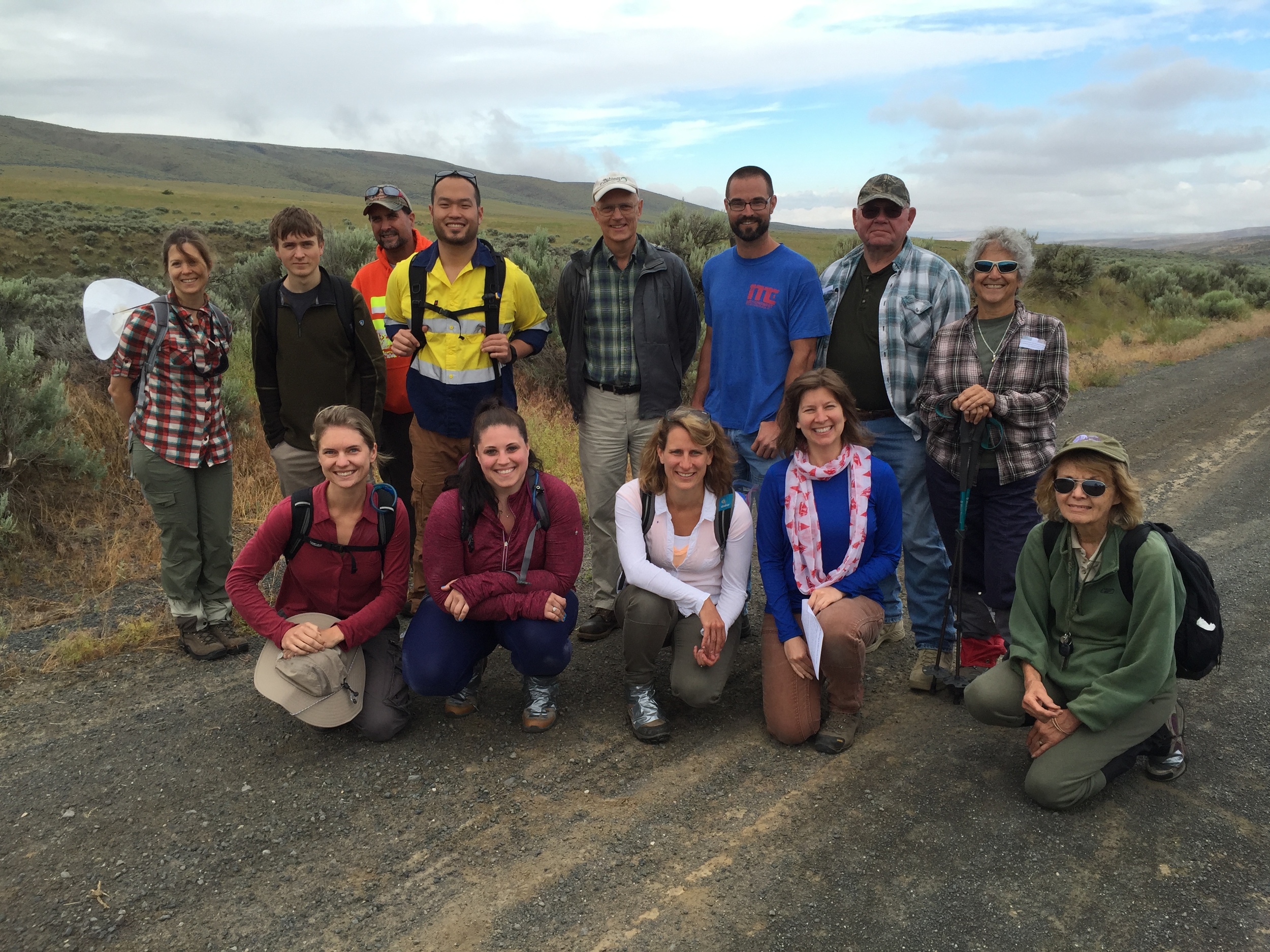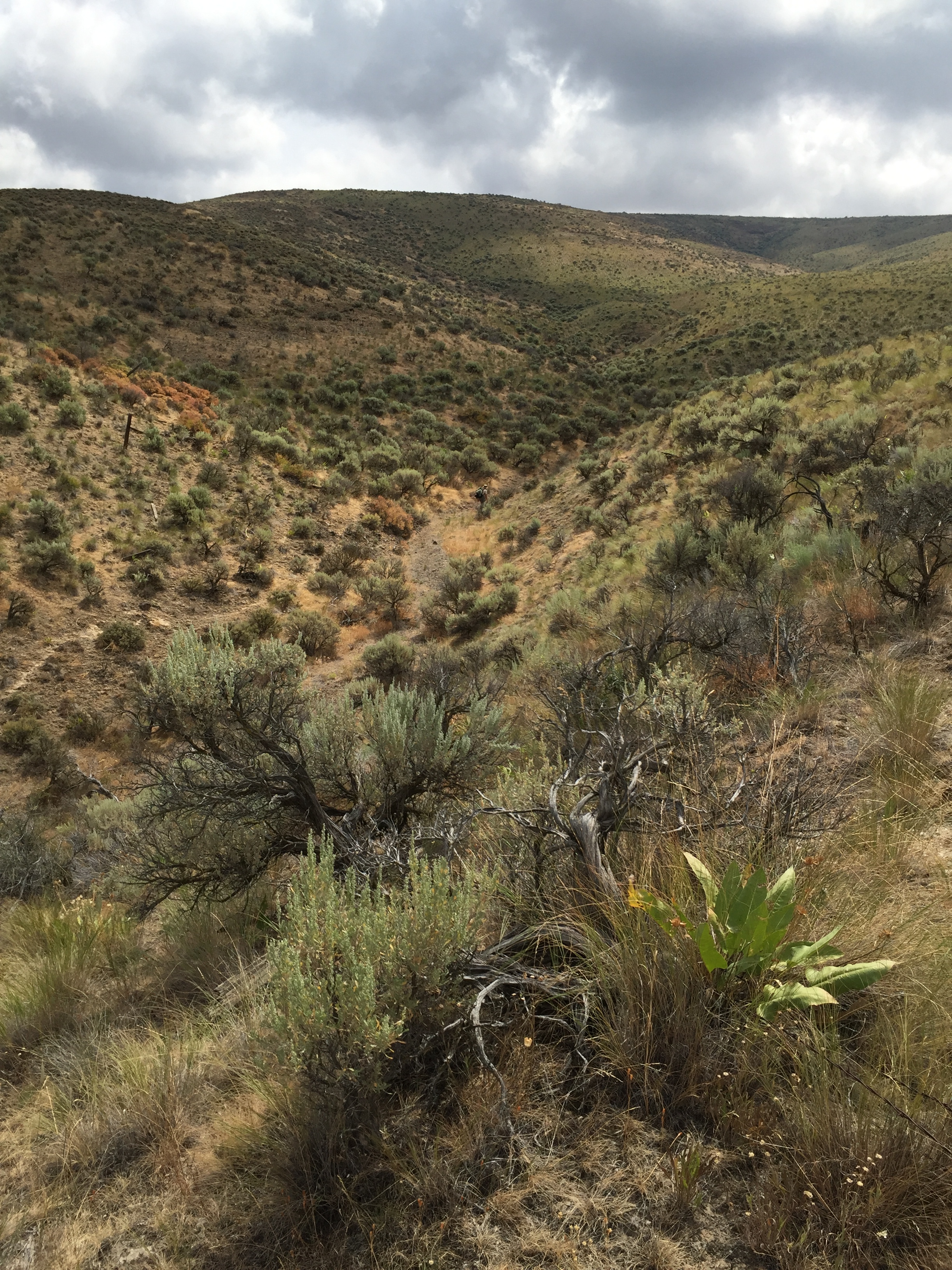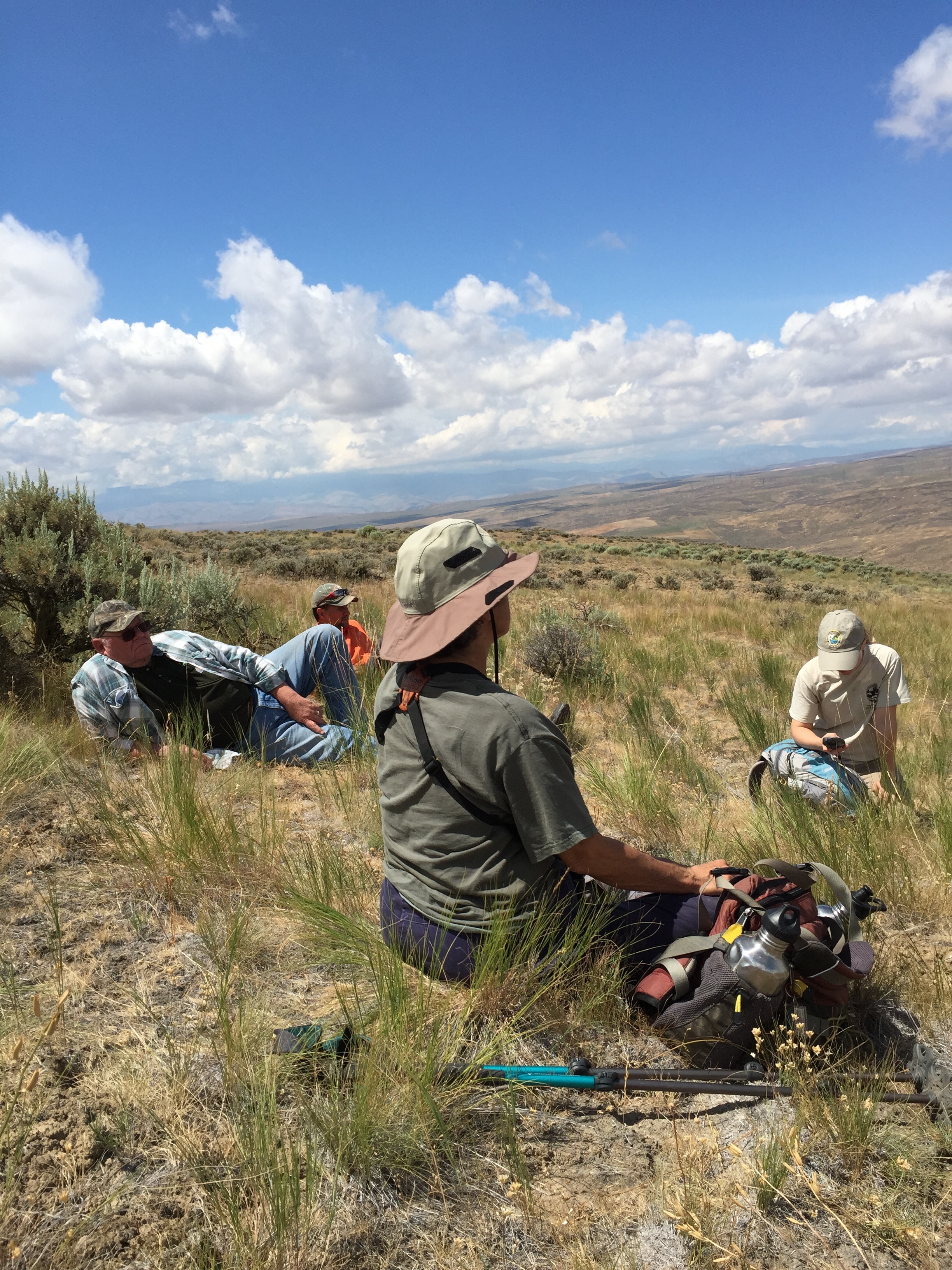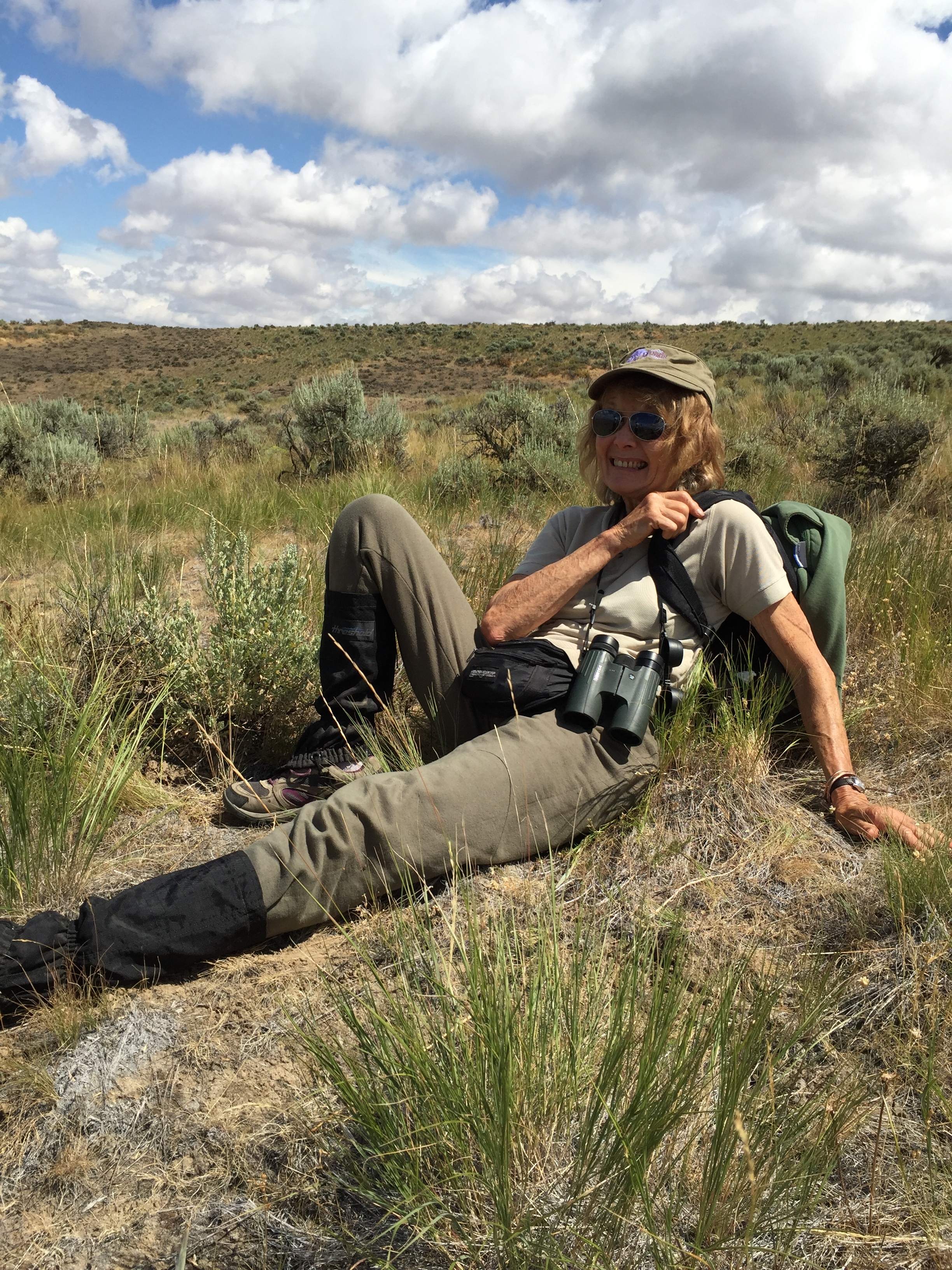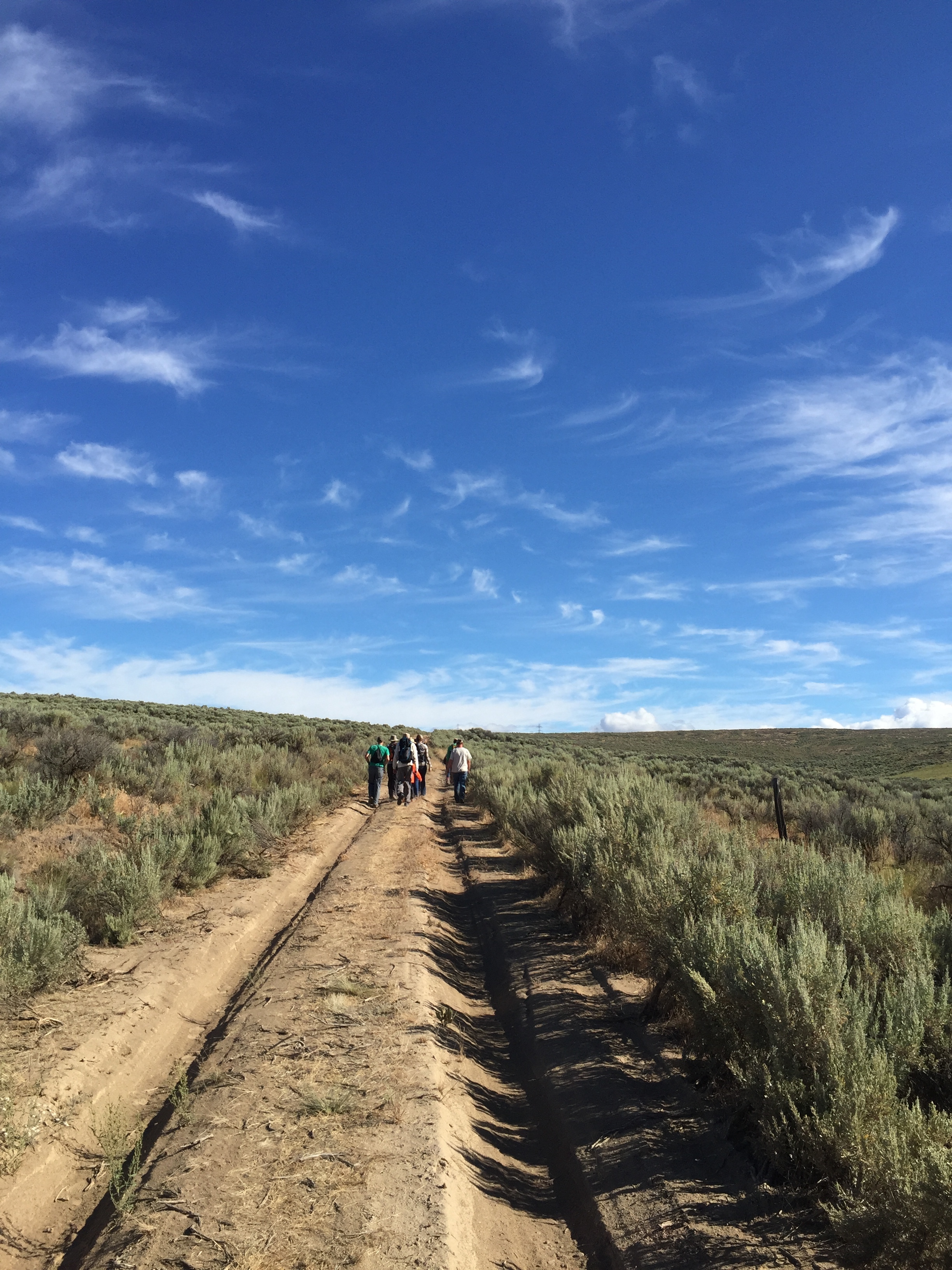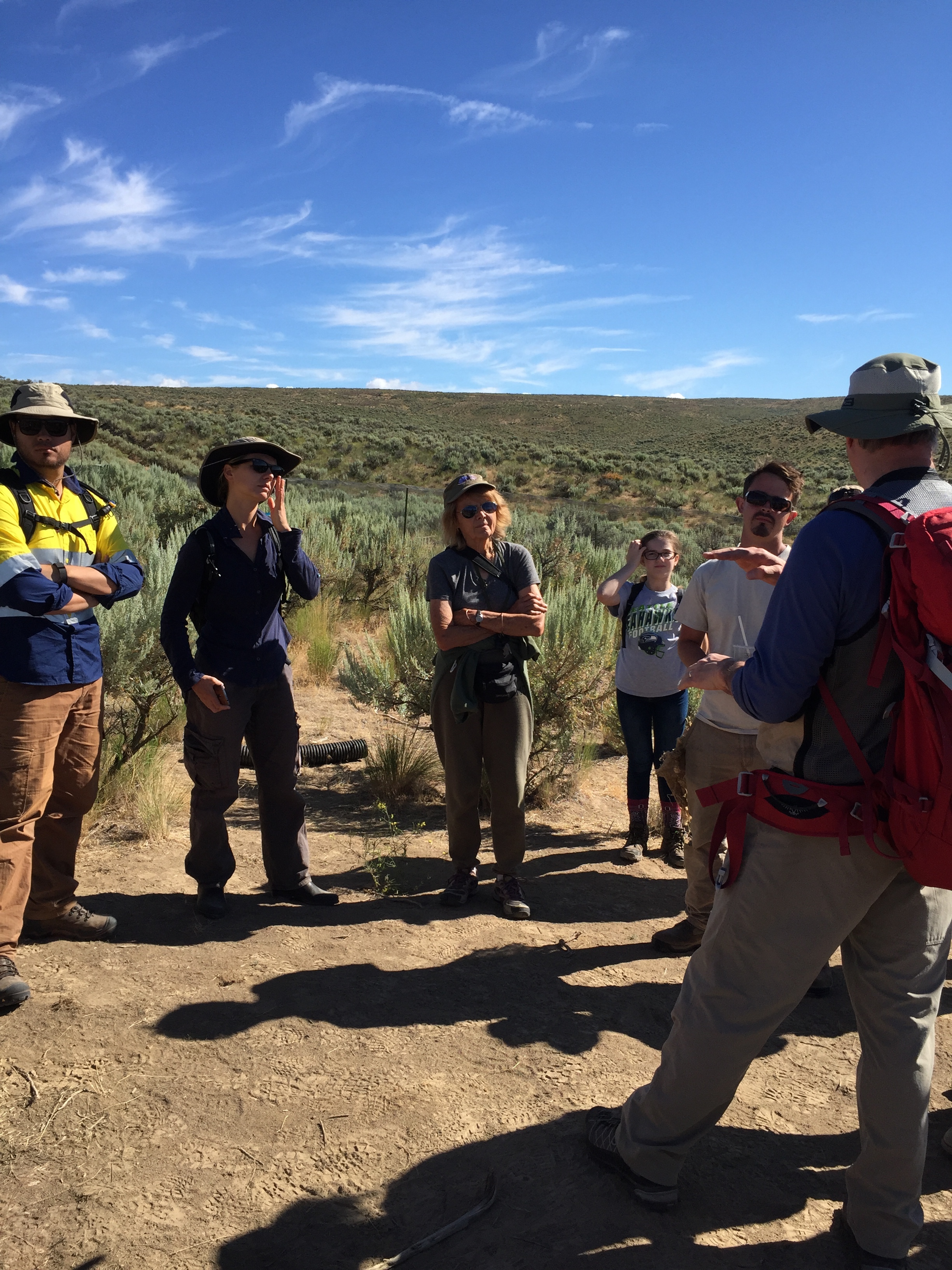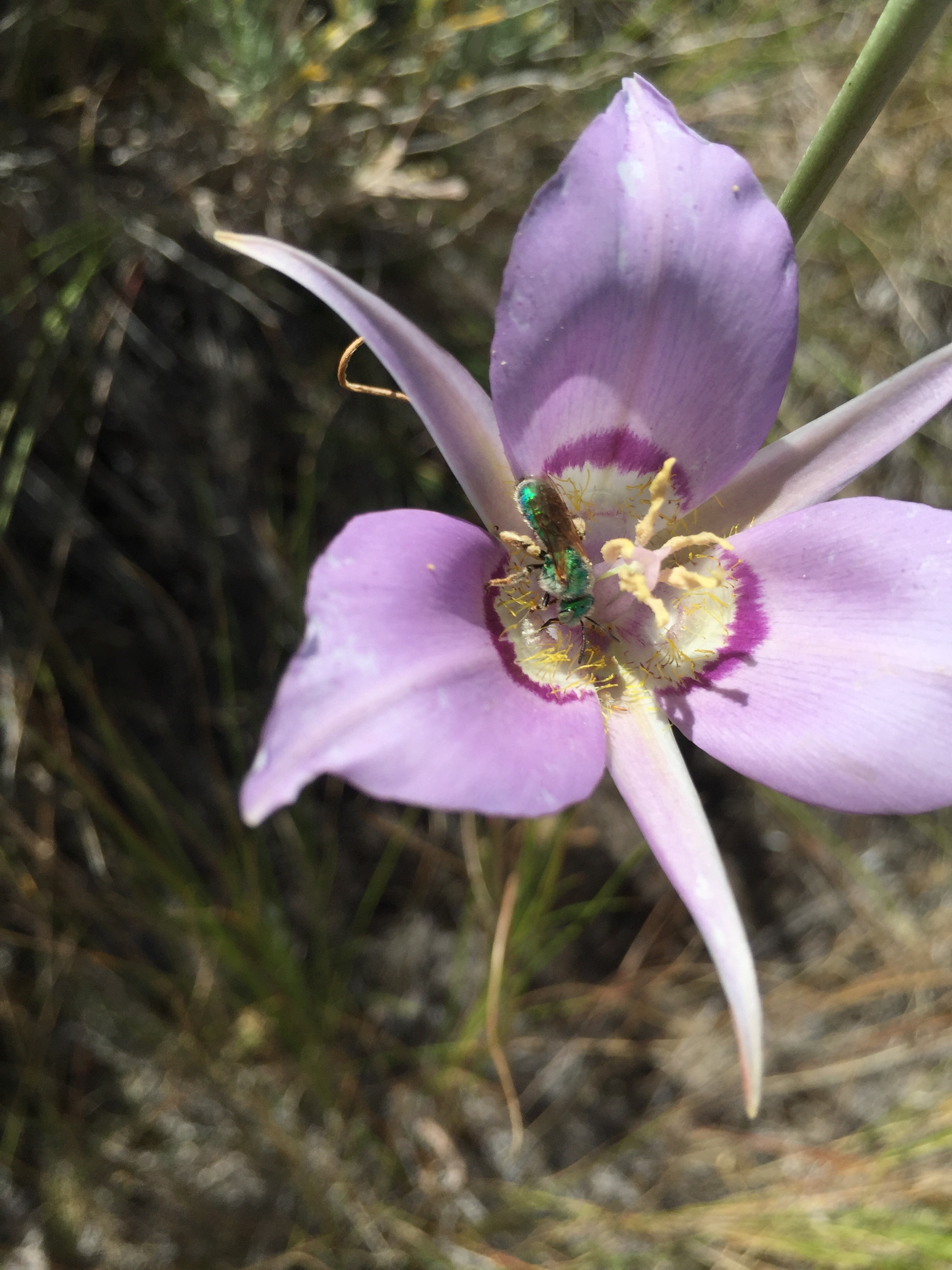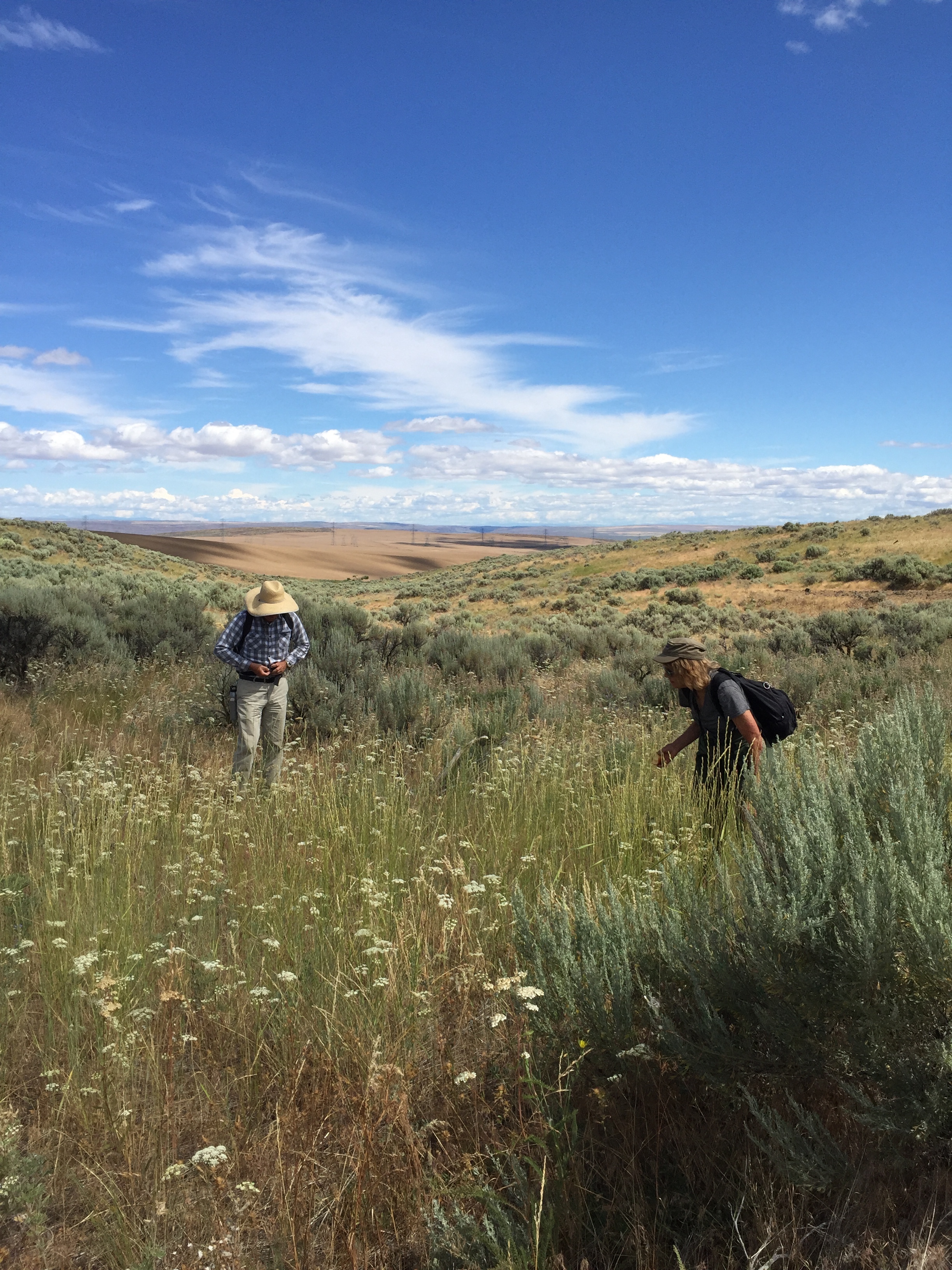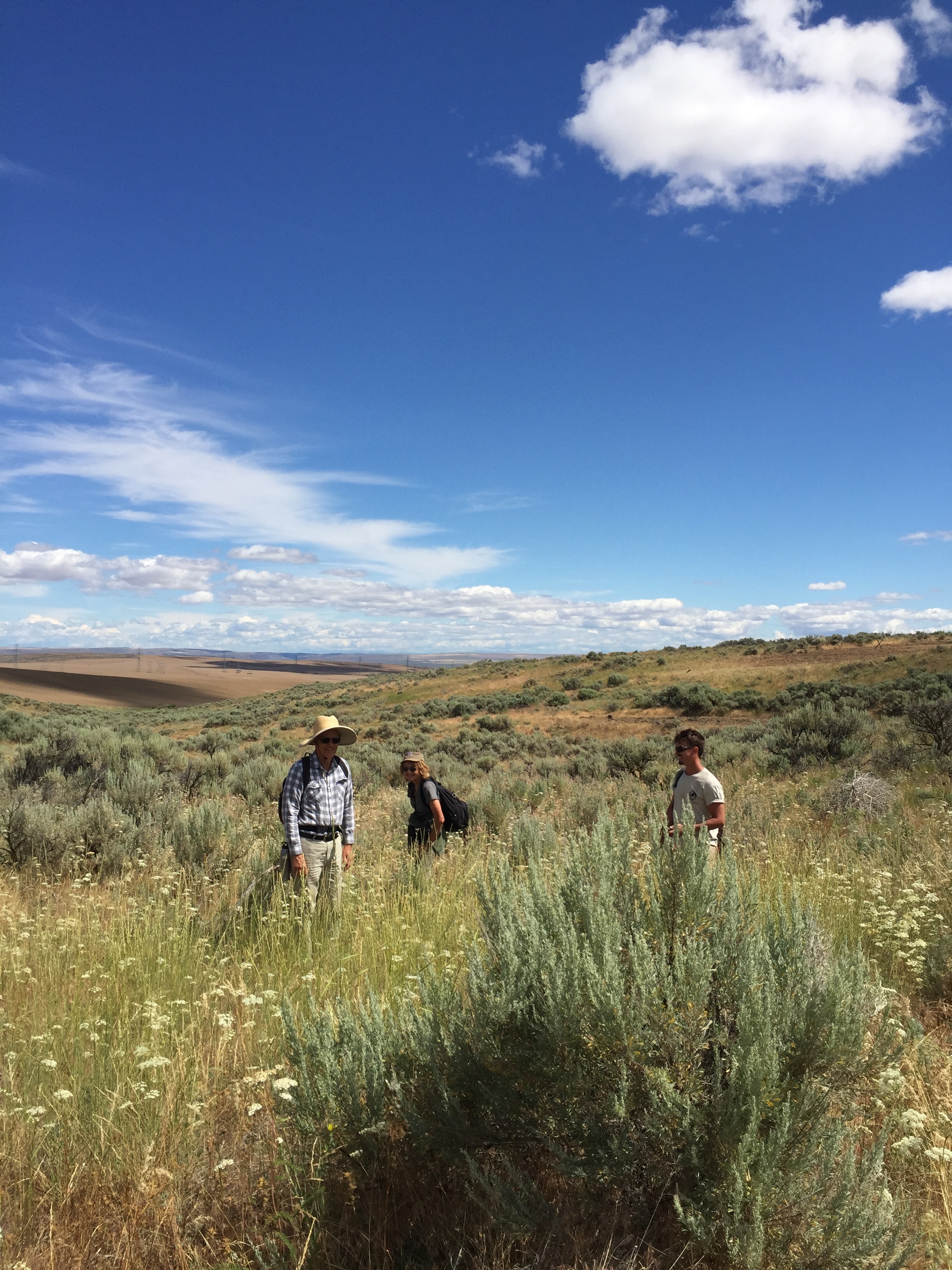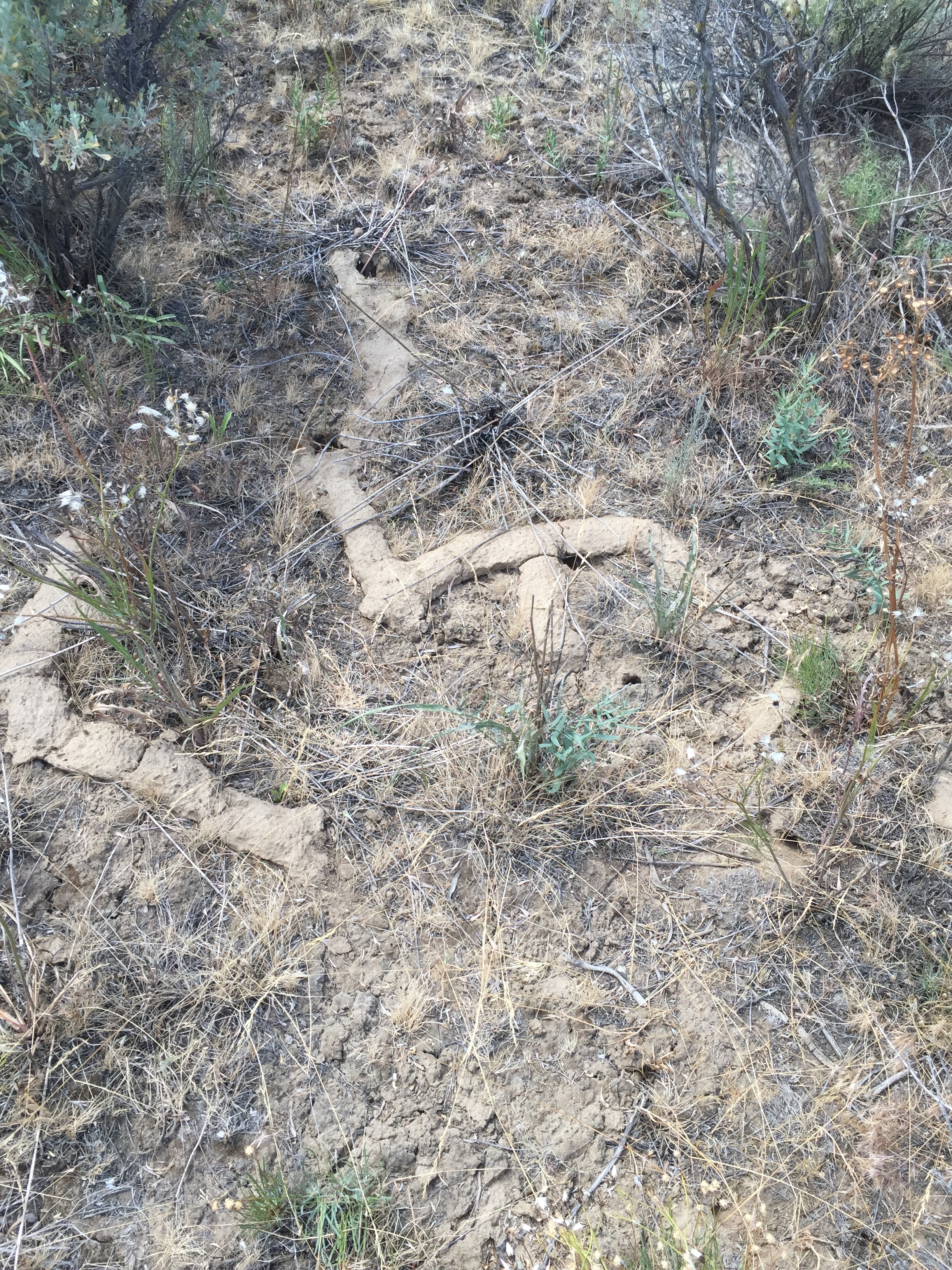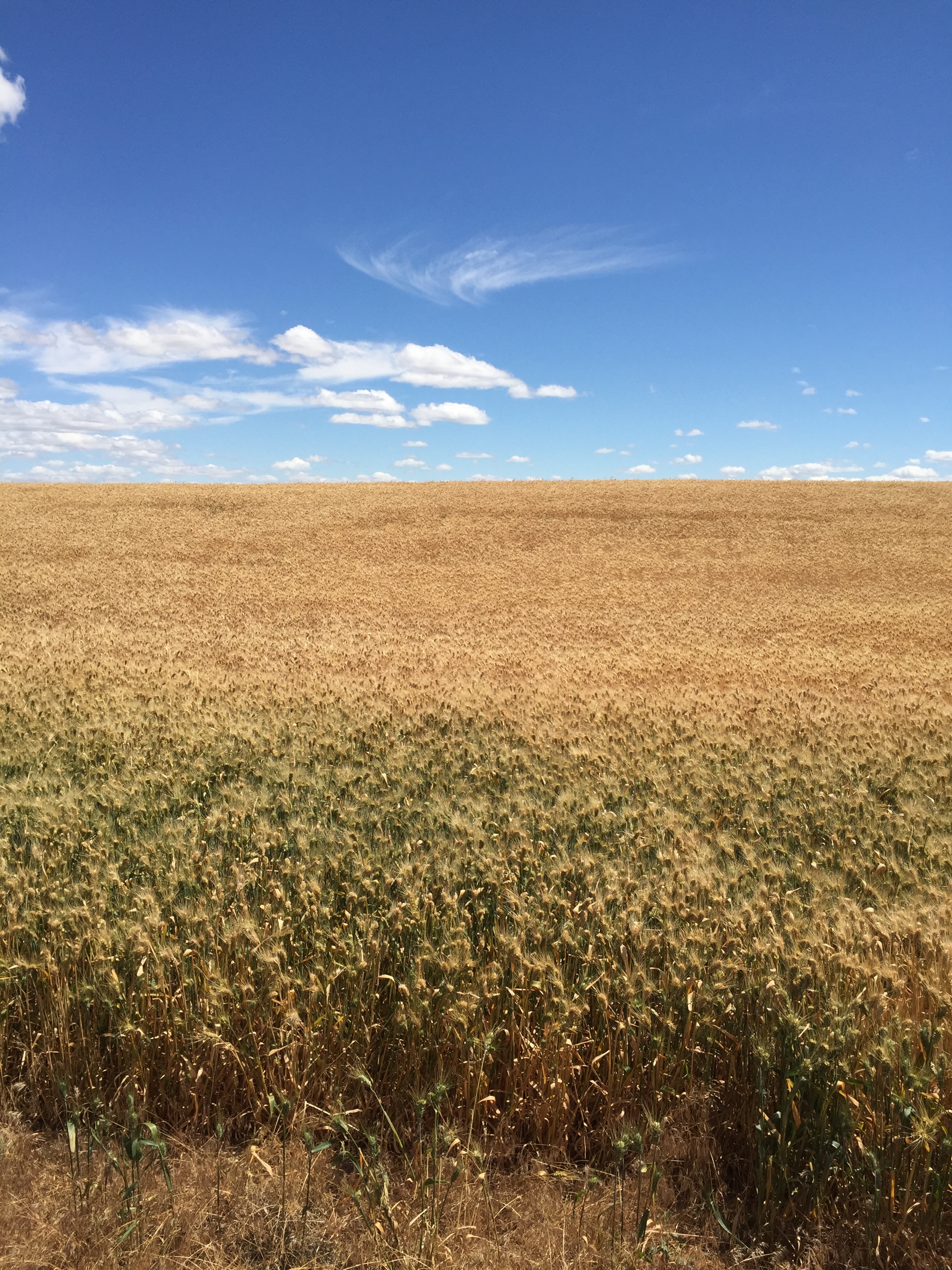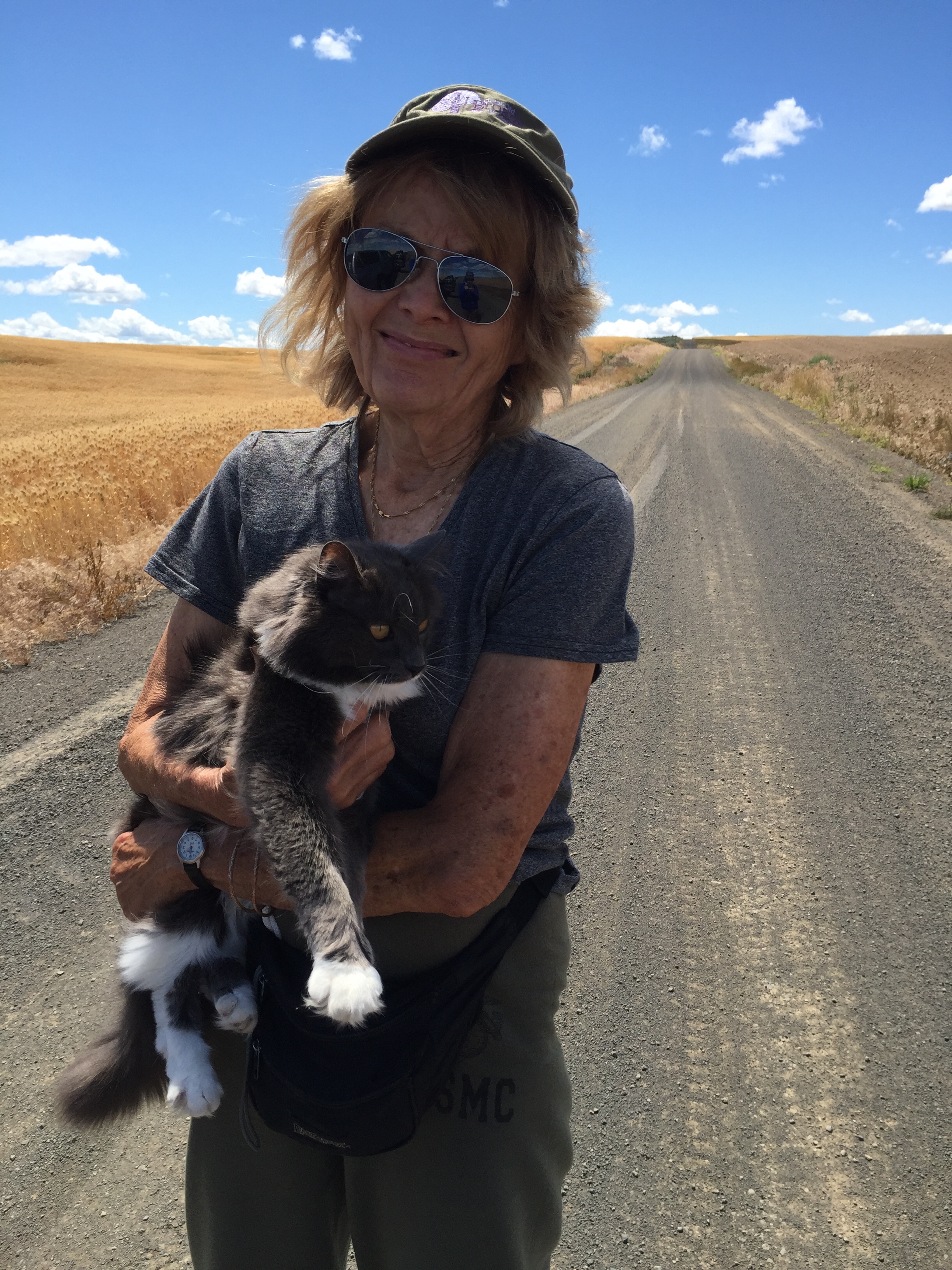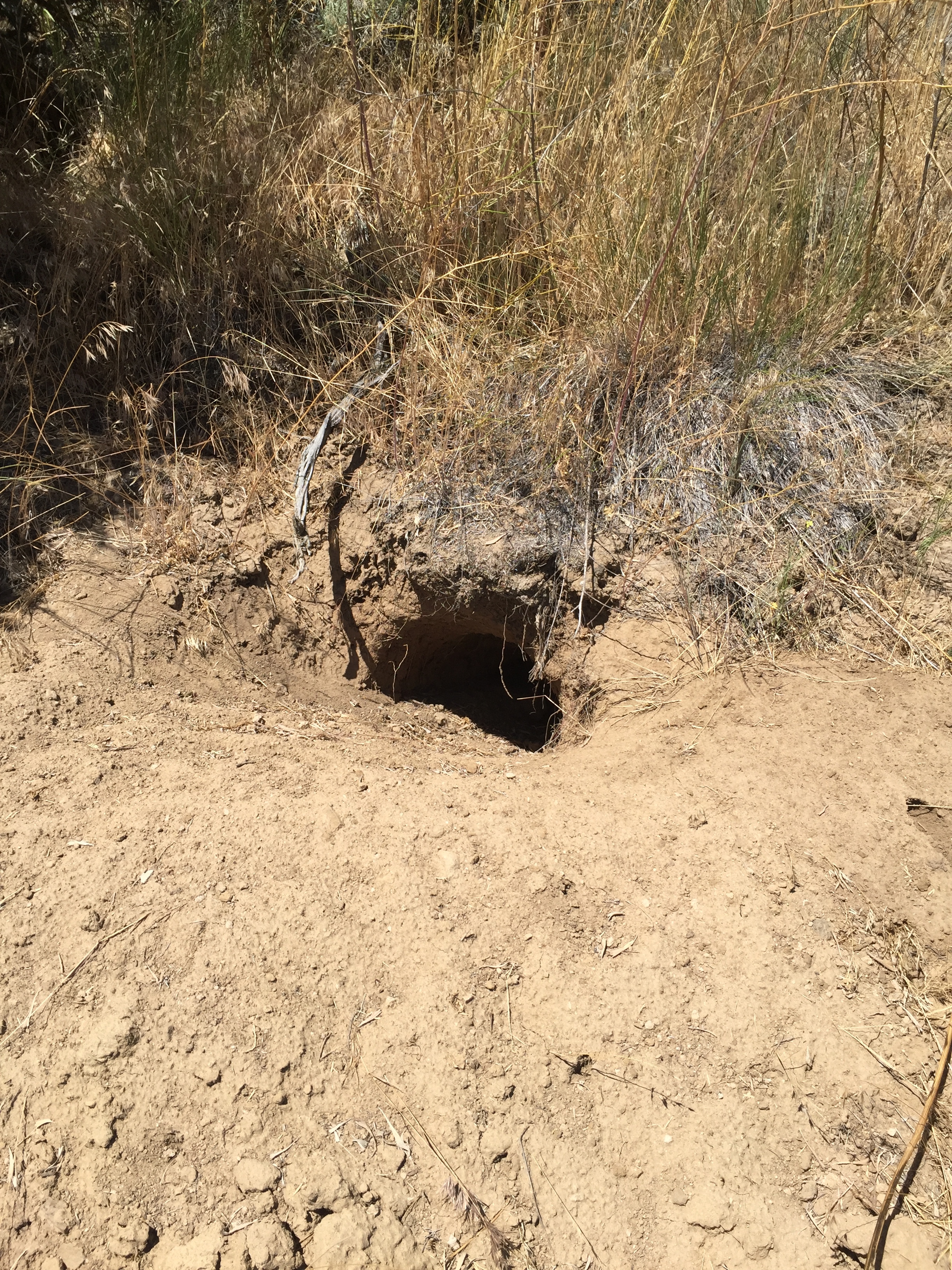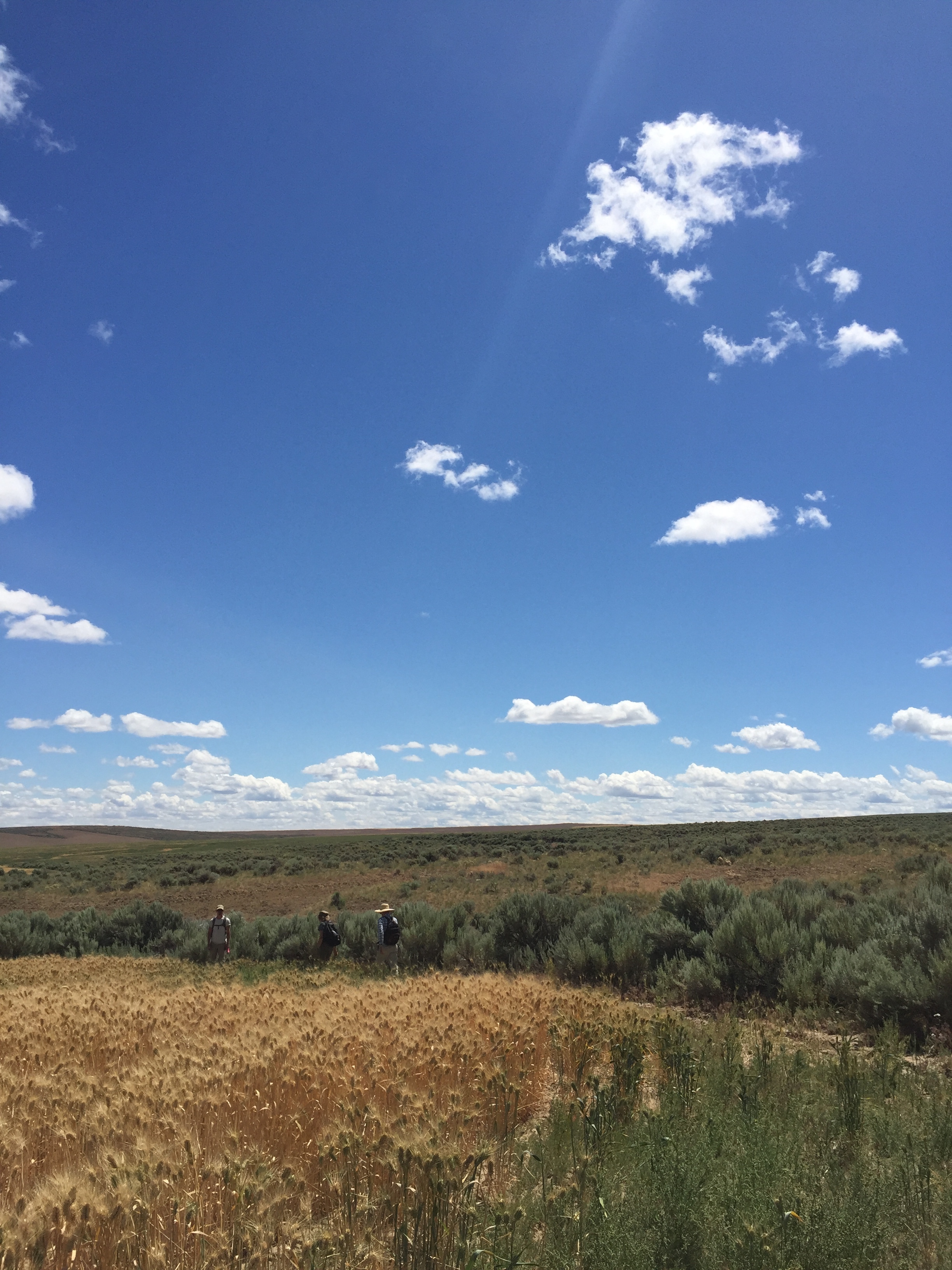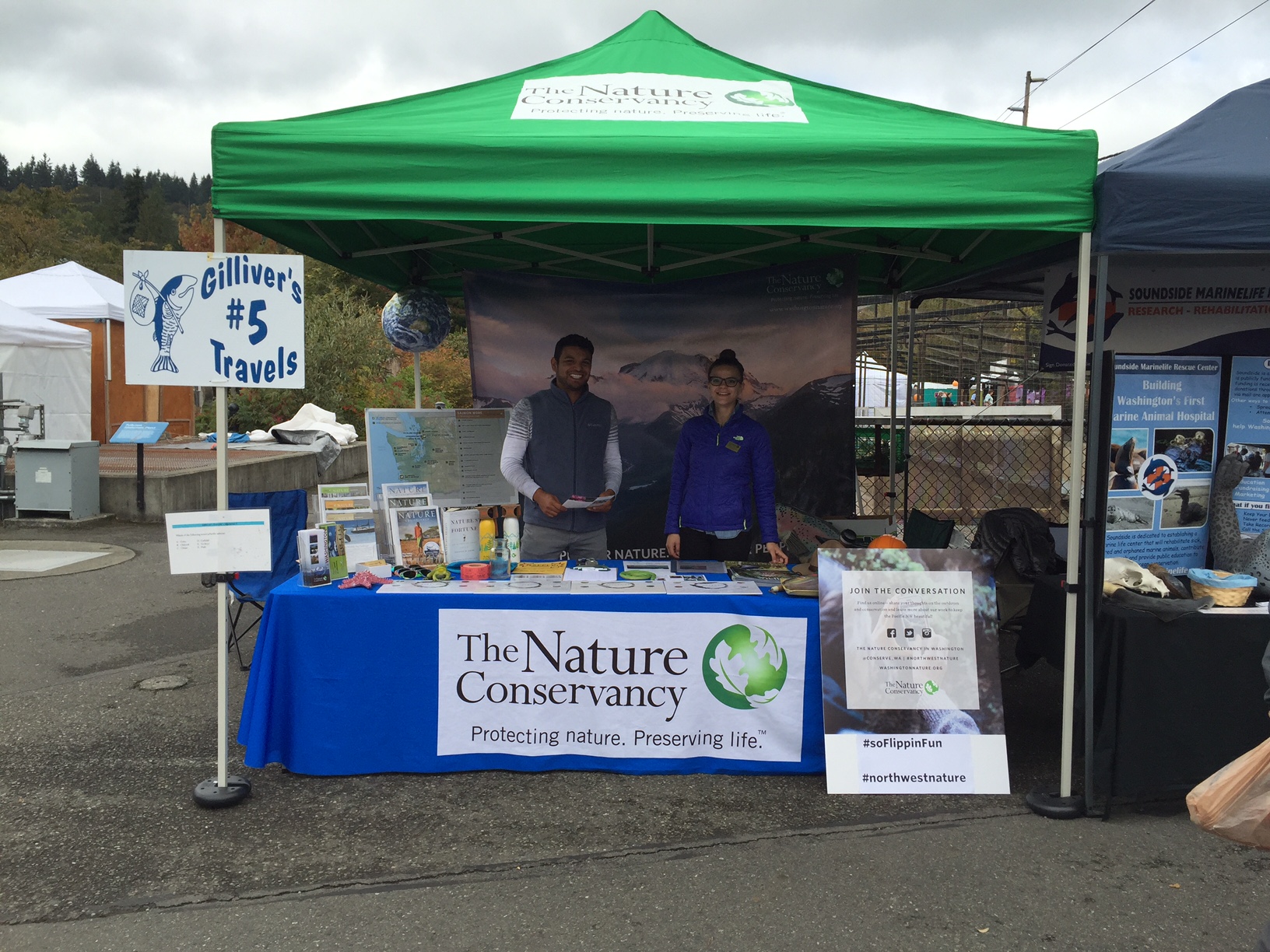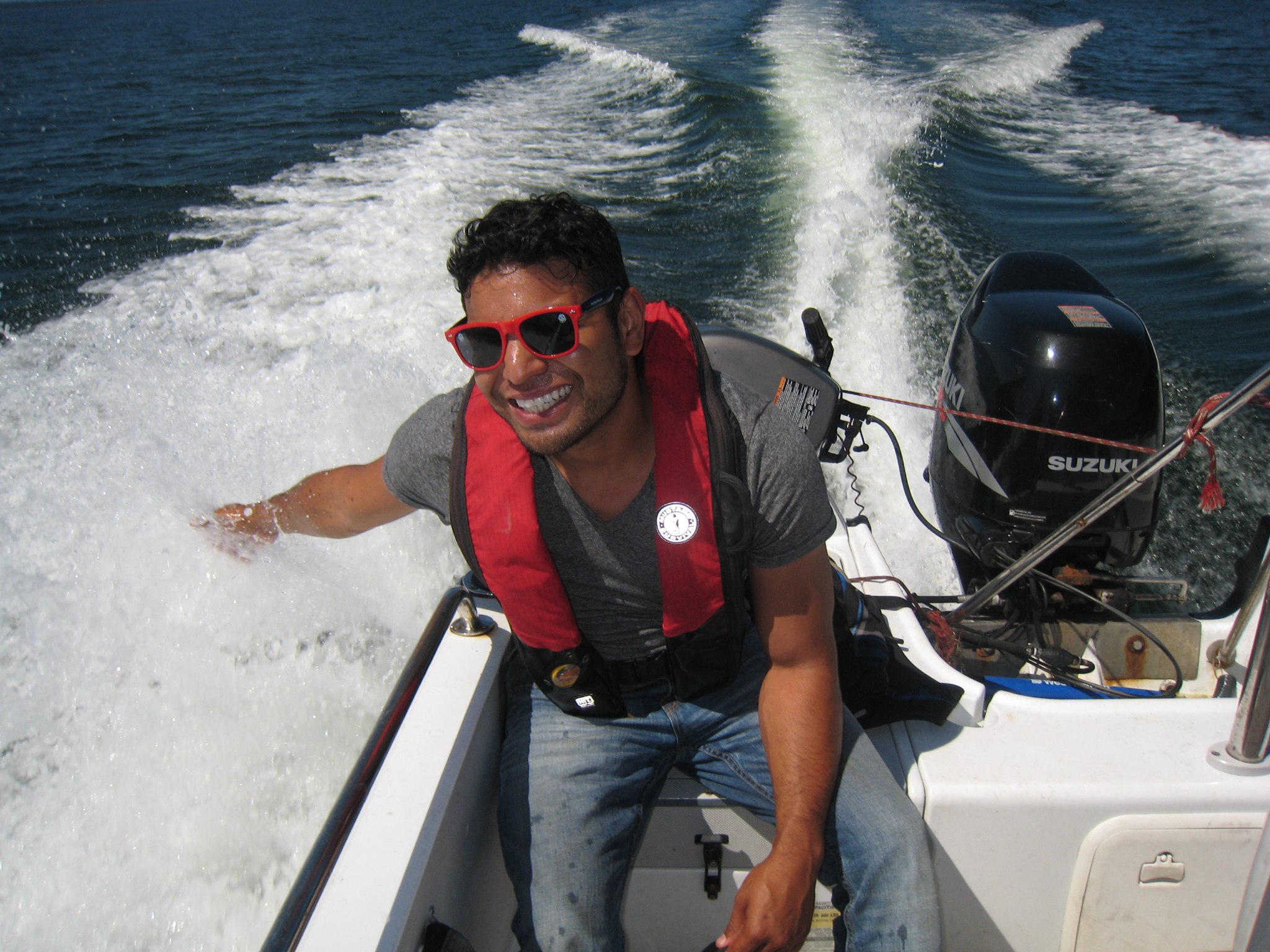A new gift of land to The Nature Conservancy, 282 acres near Quincy, will help secure a future for tiny endangered pygmy rabbits.
Shrub-steppe Fire Recovery & Resilience
Discover Washington's Shrublands
Hope Persists for Pygmy Rabbits Despite Blaze
Search Party for Pygmy Rabbits
Written & Photographed by Lauren Miheli, Volunteer Coordinator and Anna Snook, Volunteer Photographer
A hike in Washington’s sage brush country will reveal plant, animal, and bird populations distinct from those on the West Side of the state. On a typical day one would be lucky to see mule deer, badgers, meadow larks, mourning doves, small horned lizards and a great many other small mammals, birds and reptiles. Ideally if you saw a rattle snake it would be from a distance. Something you most likely wouldn’t encounter would be a Columbia Basin Pygmy Rabbit. Although native to this region, the pygmy rabbit is in danger of becoming extinct. The Washington Department of Fish and Wildlife (WDFW) has been working on a project to breed these rabbits in semi-captivity and reintroduce populations back into the wild, including on our Beezley Hills Preserve. Bringing a species back from the brink of extinction is challenging work. There is no manual on how it’s done. Wildlife biologists, using their knowledge of the rabbit’s behavior, funding from the federal government, and a lot of intuition, utilize a trial and error approach to breeding and reintroducing them to their native sage brush habitat in central Washington.
In order to determine if any rabbits released have successfully survived in the wild, Jon Gallie and Shea Gibbs of WDFW invited a crew of about 30 Nature Conservancy volunteers to traverse the land near the release sites and look for signs of pygmy rabbits: burrow holes and scat. Volunteers split into groups of 4, with each group led by a member of WDFW’s staff armed with a GPS unit and collection tools. Each volunteer covered about 7 miles each day, traversing back and forth, and up and down hills, throughout sage brush.
While searching for signs of Pygmy Rabbits I was struck at how familiar I became with signs of other desert species – badger and coyote dens, snake holes, mouse holes, cottontail rabbit scat, prints and scat from deer, coyotes, and the feral horses that were grazing in the area. Upon first site a badger den filled me with excitement. After the 5th or 6th one I became jaded. Throughout two days of hiking and covering sage brush land that could once have been home to dozens of Pygmy Rabbits, with all of the volunteers intently searching on those two days, only one burrow with fresh scat was located. So this is what it feels like to look for an endangered species - searching and searching, and not finding what you’re looking for. We collected valuable data that the biologists will use to improve their strategy, but we were disappointed that we did not find more signs of pygmy rabbits. Two days of hiking for nearly 6 hours straight and the absence of signs of Pygmy Rabbits was felt in our collective psyches. The lack of discoveries does not mean that Pygmy Rabbit recovery is hopeless. Aside from the literal silver lining (partial cloud cover on both days cooled us down and made the typically unbearable eastern Washington heat a non-issue) the one burrow that we did find gives the project managers something to be excited about. Previous surveys of the area revealed no burrows at all. Samples of the scat were collected that will be sent to the lab at the Oregon Zoo, where DNA from all captive-bred rabbits is kept on record, and we will learn when the rabbit that left the evidence was released, how long it has survived in the wild, and if we’re really lucky we will find out that it has DNA that has not yet been recorded - which would indicate that it was wild born.
The biologists at the Washington Department of Fish and Wildlife are doing amazing work, and are highly dedicated to their task of bringing this species back to healthy population numbers. I believe they are up to the challenge, and I hope that we can continue to improve our land management and conservation practices, so that other species are not pushed this far in the future.
LEARN HOW YOU CAN VOLUNTEER
December Volunteer Spotlight: Erik Alarcon
Written by Lauren Miheli, Volunteer Coordinator
Erik has been actively involved as a volunteer with The Nature Conservancy for almost 2 years, both as a member of our Conservation Ambassadors and as a regular participant in our work parties. When he’s not volunteering with us, or working long hours with UPS, he’s an enthusiastic supporter of our work, talking about the importance of conservation to anyone who will listen. We appreciate Erik for his willingness to always help out with the heavy lifting, and for always making volunteering fun! Thank you Erik!
Recently we chatted with Erik about why he volunteers, and what matters most in life. Here’s what he had to say.
The Nature Conservancy: Where are you from? How long have you been living in Seattle?
Erik Alarcon: I was born in Chicago, grew up in Los Angeles, and went to college in Arizona. I have been living in Seattle for about 3 years. I love Seattle. One of the main reasons I’ve stayed here is for the outdoor activities!
TNC: What inspired you to start volunteering with The Nature Conservancy?
EA: I love the outdoors! I first signed up with Washington Trails Association clearing trails, but most of their opportunities did not fit with my schedule. I was headed home from hiking one day, and I saw a volunteer recruitment flyer at a Starbucks, which led me to call and sign up. It’s actually a funny story… I almost didn’t come back after my first time volunteering. The Volunteer Coordinator (Lauren) chastised me for not wearing my logo t-shirt to the event. But I kept getting the emails and ended up coming back and having a great time (and Lauren calmed down about the t-shirt thing.)
TNC: What gives you the most hope for the future?
EA: People are having more awareness of climate change and that we need to preserve our wilderness and nature. We know that we need to take care of the beauty around us. Washington is a beautiful place that we want to be able to share with our kids and grandkids, and teach them to appreciate and take care of the environment.
TNC: How does volunteering make you feel?
EA: Good, like I’m helping out. It makes me feel a part of something. It makes me feel like I saved bunnies*. Volunteering helps you learn things that you never would have learned yourself; there’s a lot of history in Washington. You get to meet new people. There are interesting people from different walks of life. Everyone I’ve met through The Nature Conservancy is selfless, so kind and giving. Also, there are always good snacks and refreshments for volunteers!
*(Editor’s note: Erik volunteered with the Pygmy Rabbit Reintroduction Project in partnership with the Department of Fish and Wildlife, so he literally did save bunnies.)
TNC: What is your favorite Nature Conservancy preserve or project?
EA: The Moses Coulee and Beezley Hills Preserves, and the Pygmy Rabbit Reintroduction Project! I volunteered twice on this project already, and am looking forward to getting out there again soon.
TNC: What do you think the world will be like in 50 years?
EA: I think we’re going to be fine. I think a lot of people are realizing we can’t continue to take the resources of our planet, and we need to conserve the environment.
TNC: Have you ever convinced someone to do something they didn't want to do?
EA: Yes! When I first moved to Seattle I was amazed that many of the people who I met who grew up here had never left the city, so I coordinated hiking trips to get them outdoors and show them the beautiful nature they had been missing out on. Hiking can be intimidating when you think you need expensive hiking boots and special gear, or that you need to be “outdoorsy”, but really anyone can get out and enjoy the wilderness, you really don’t need much more than a map, food, water, and good friends to hike with!






